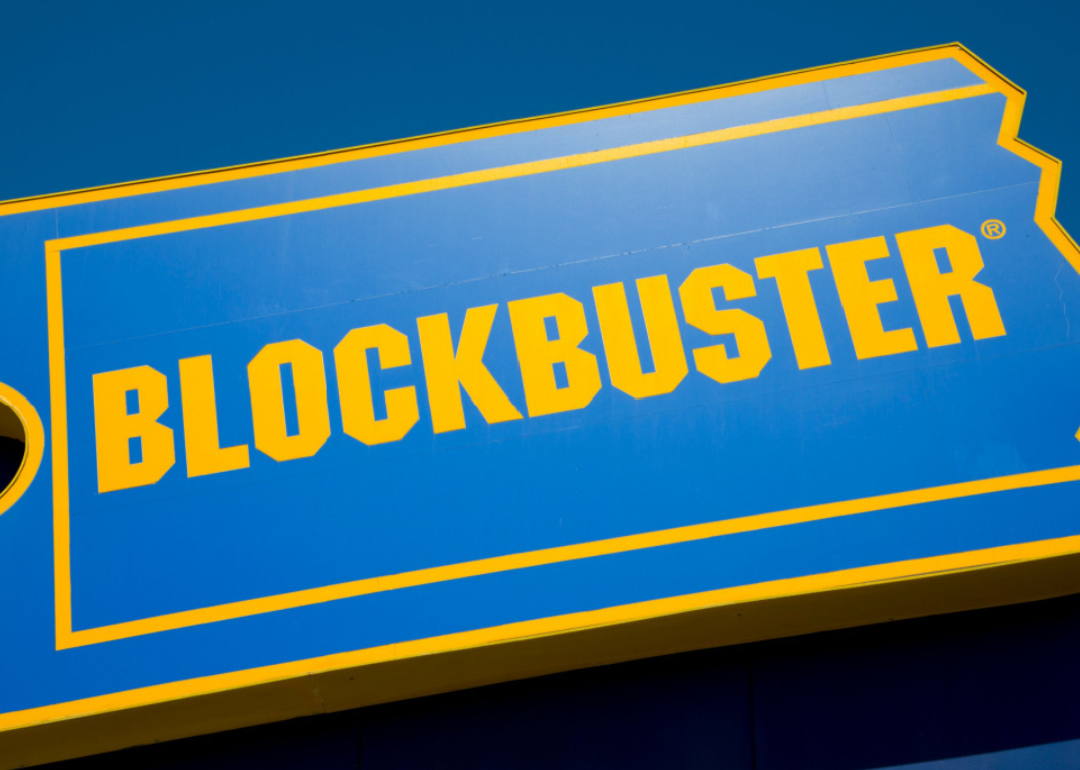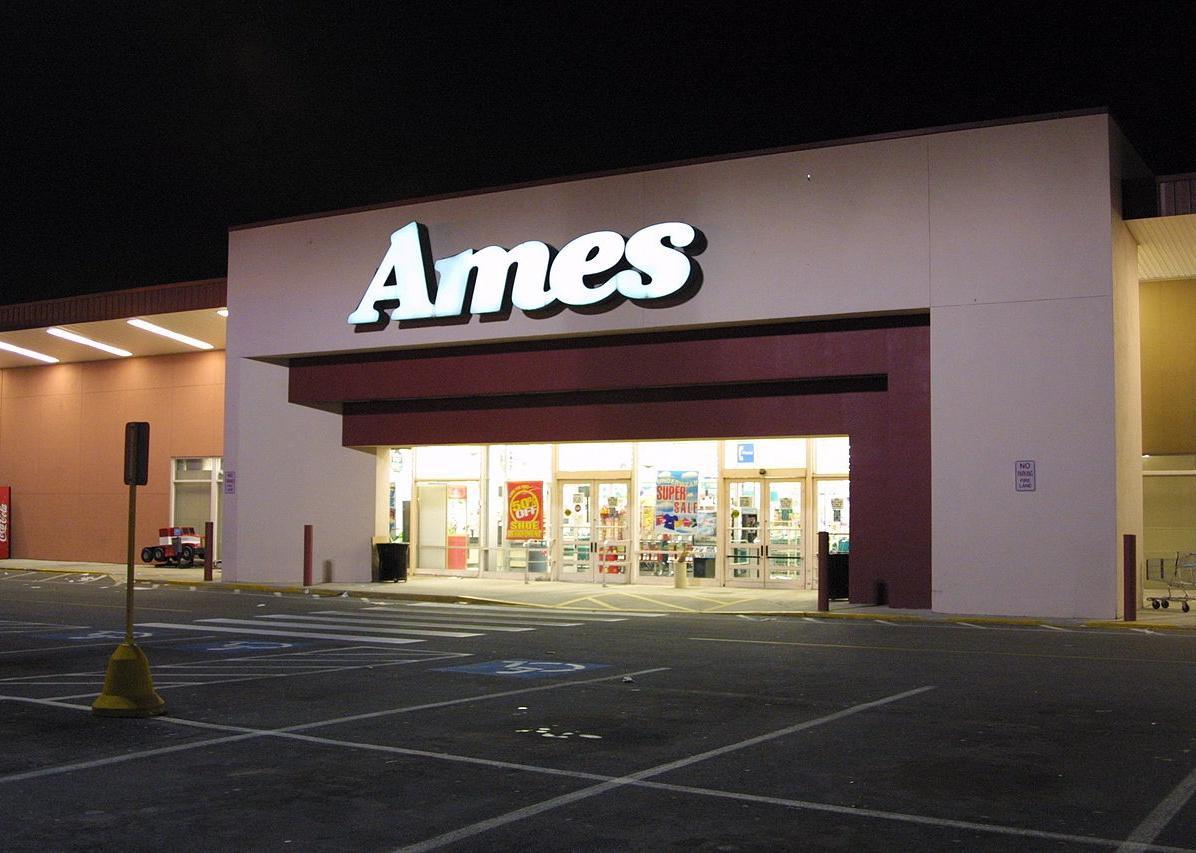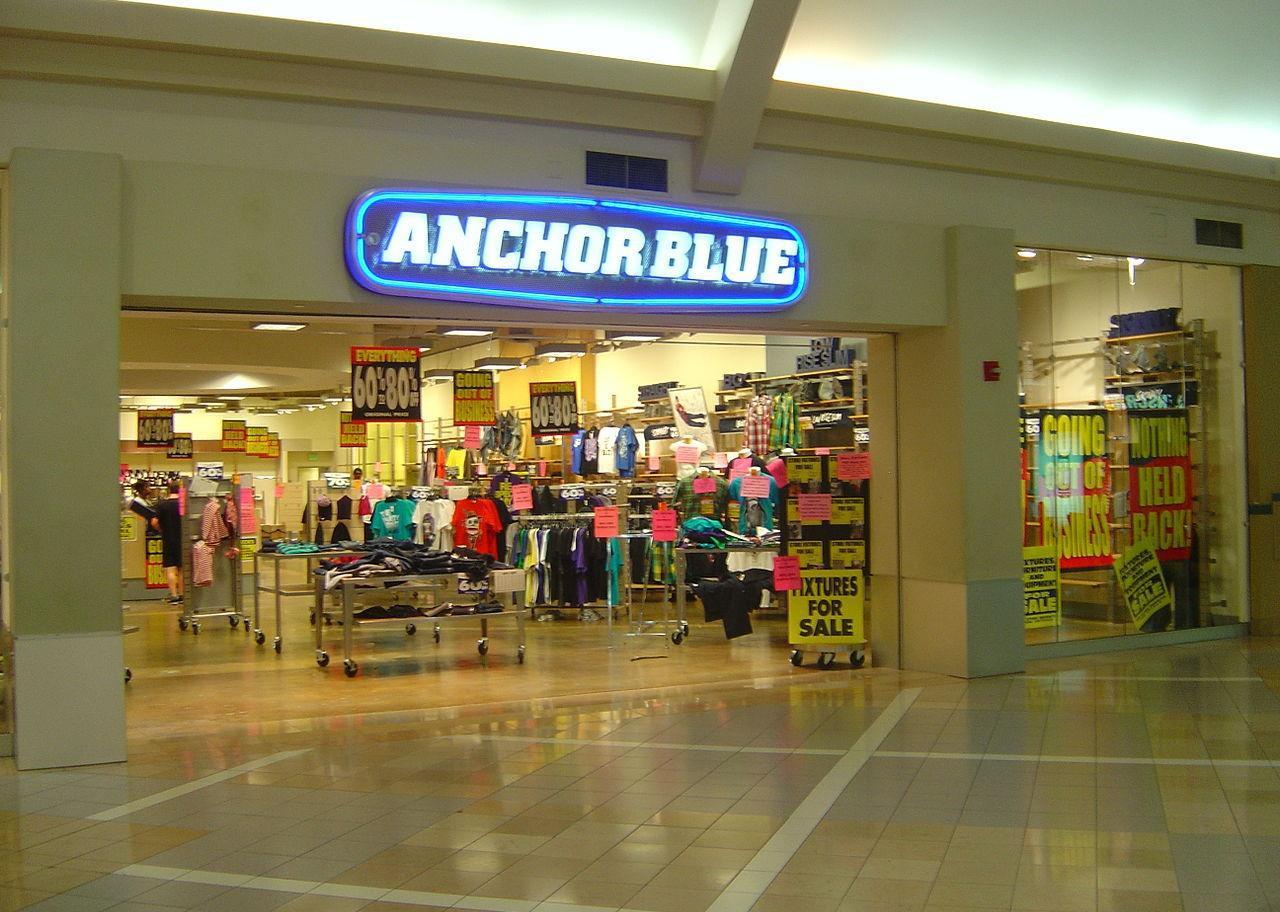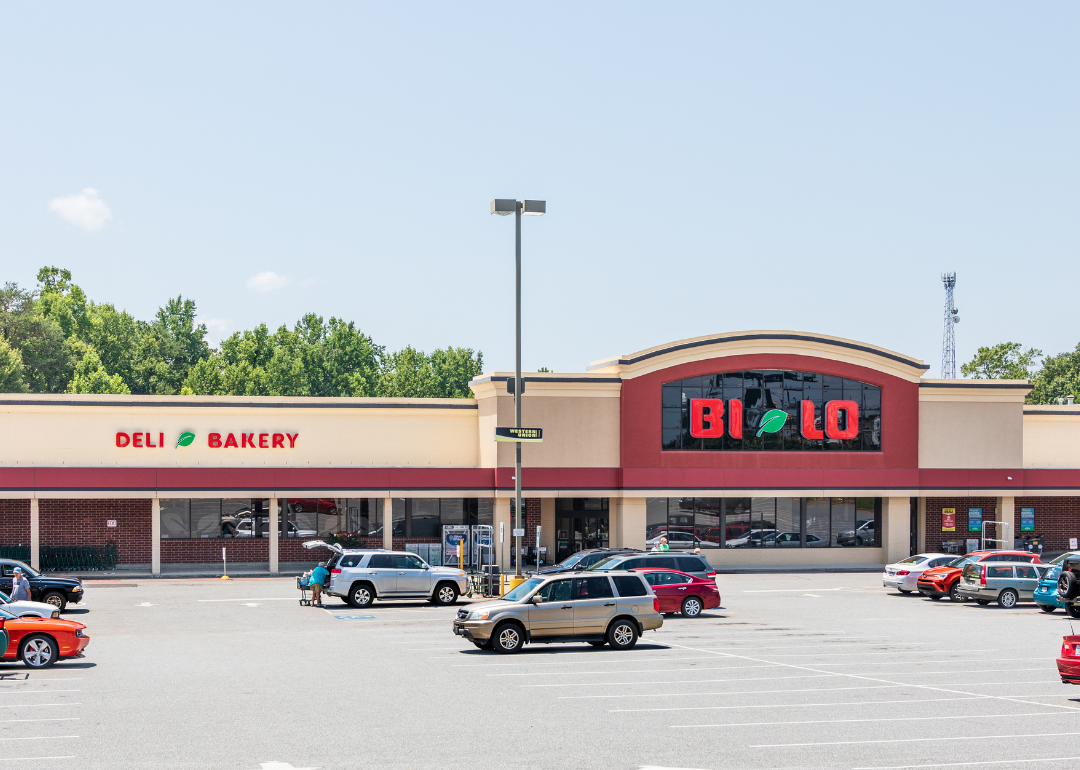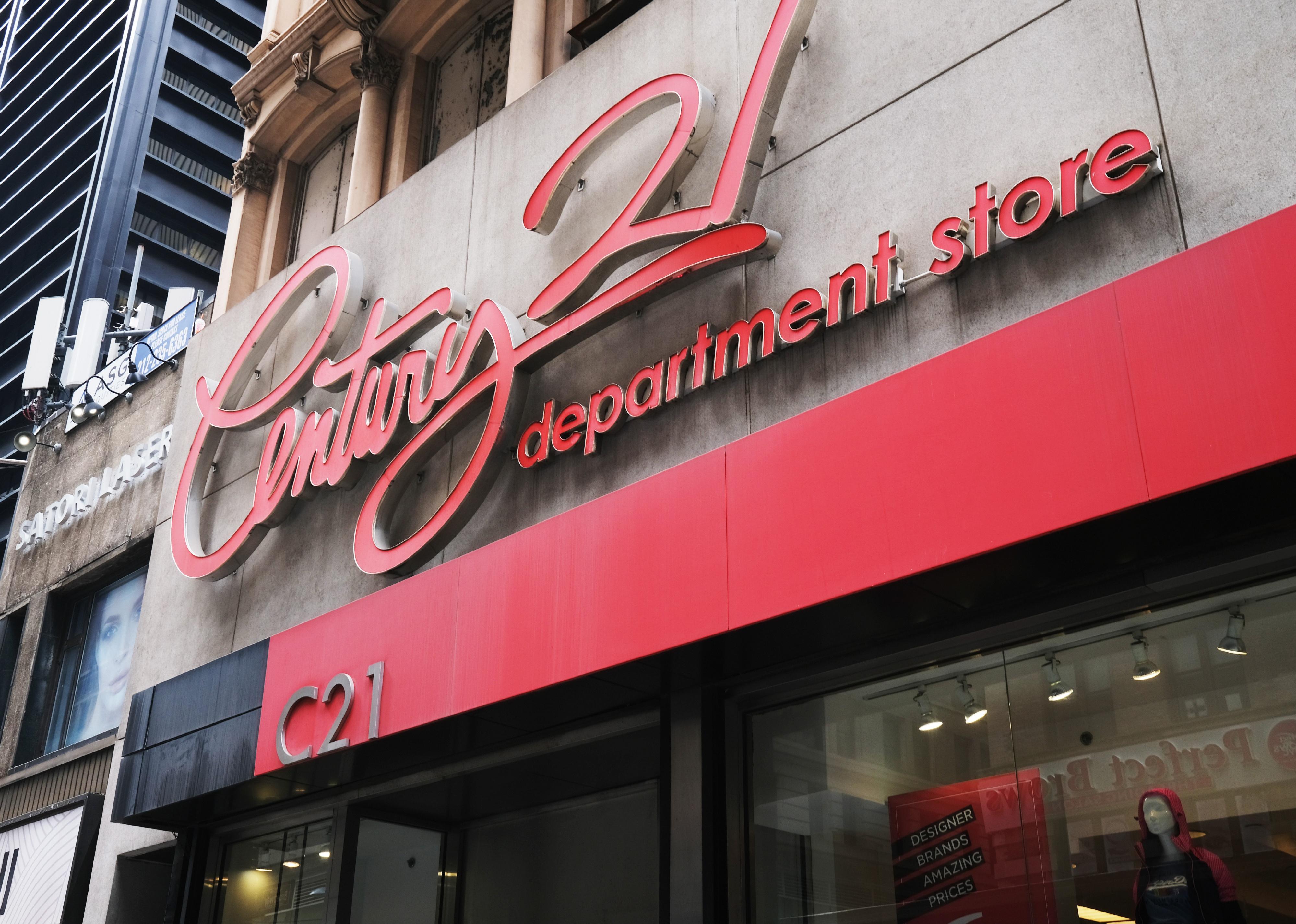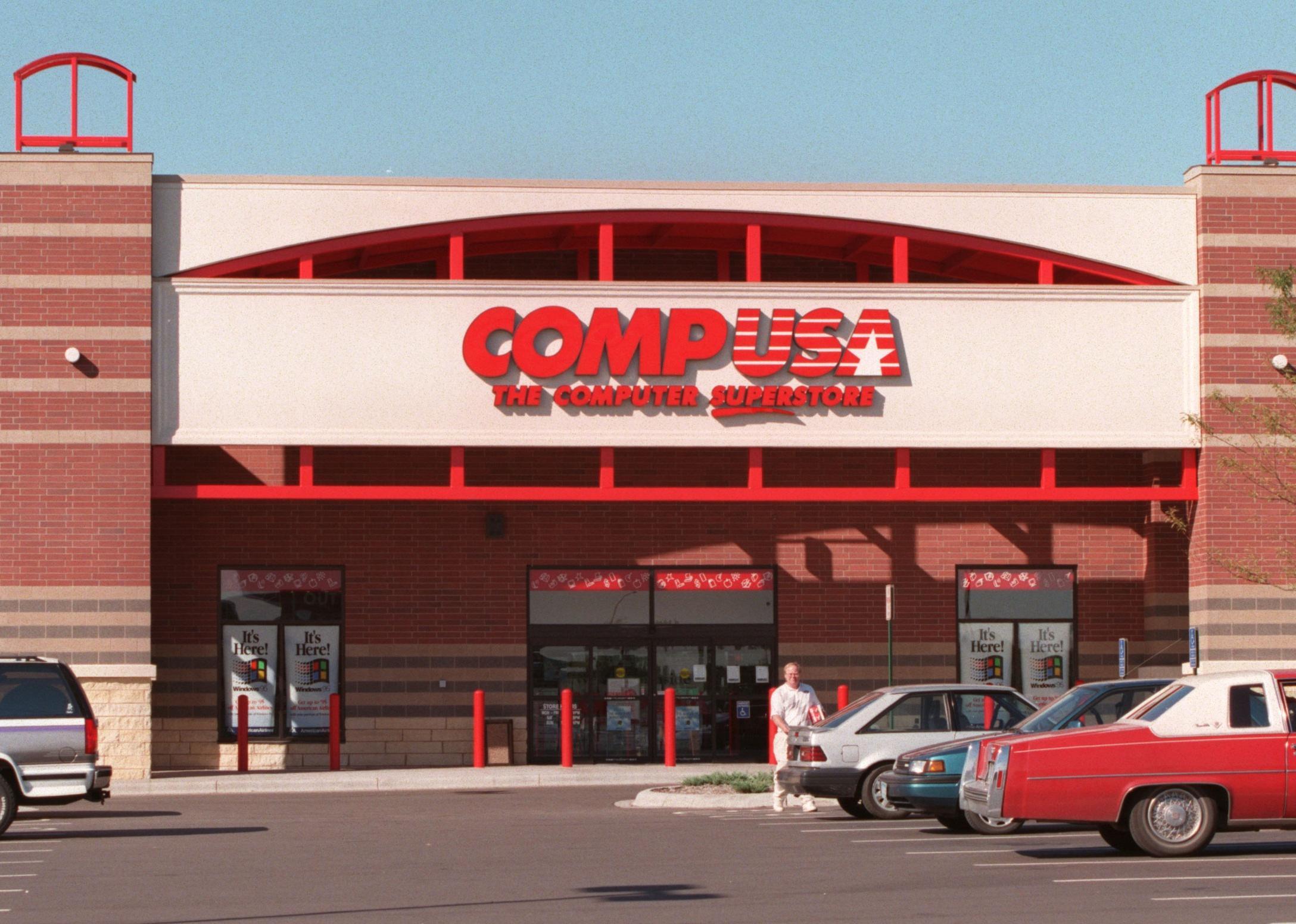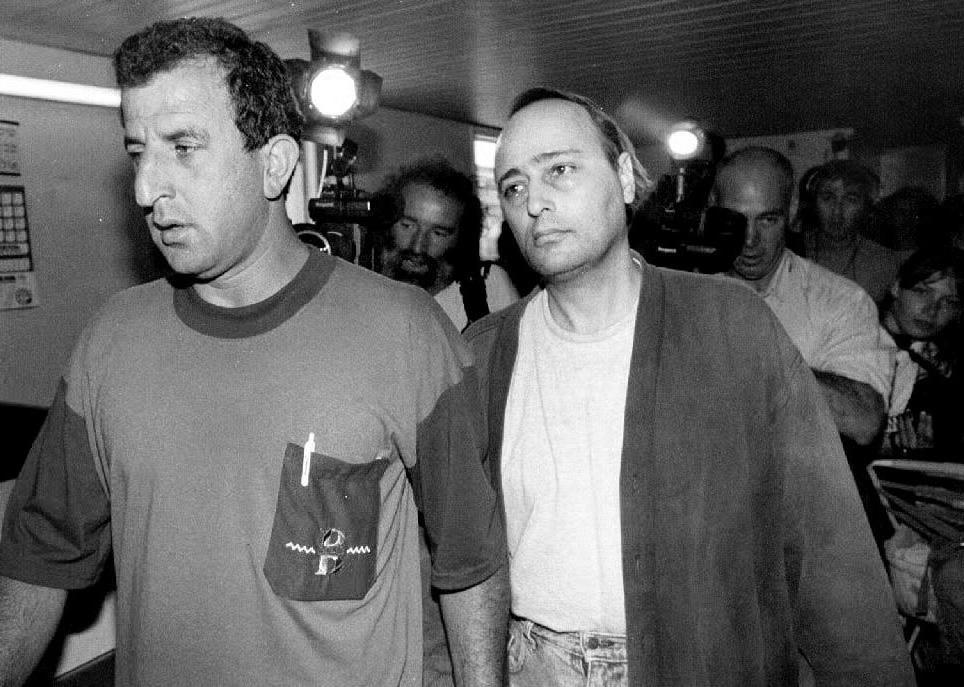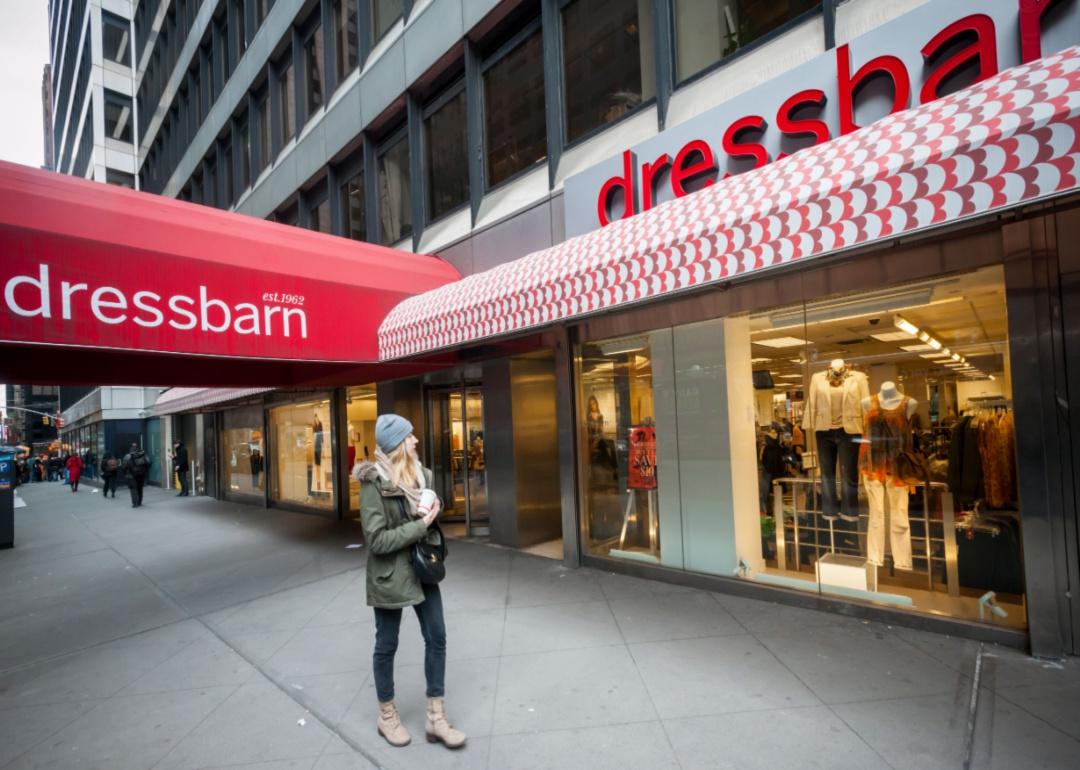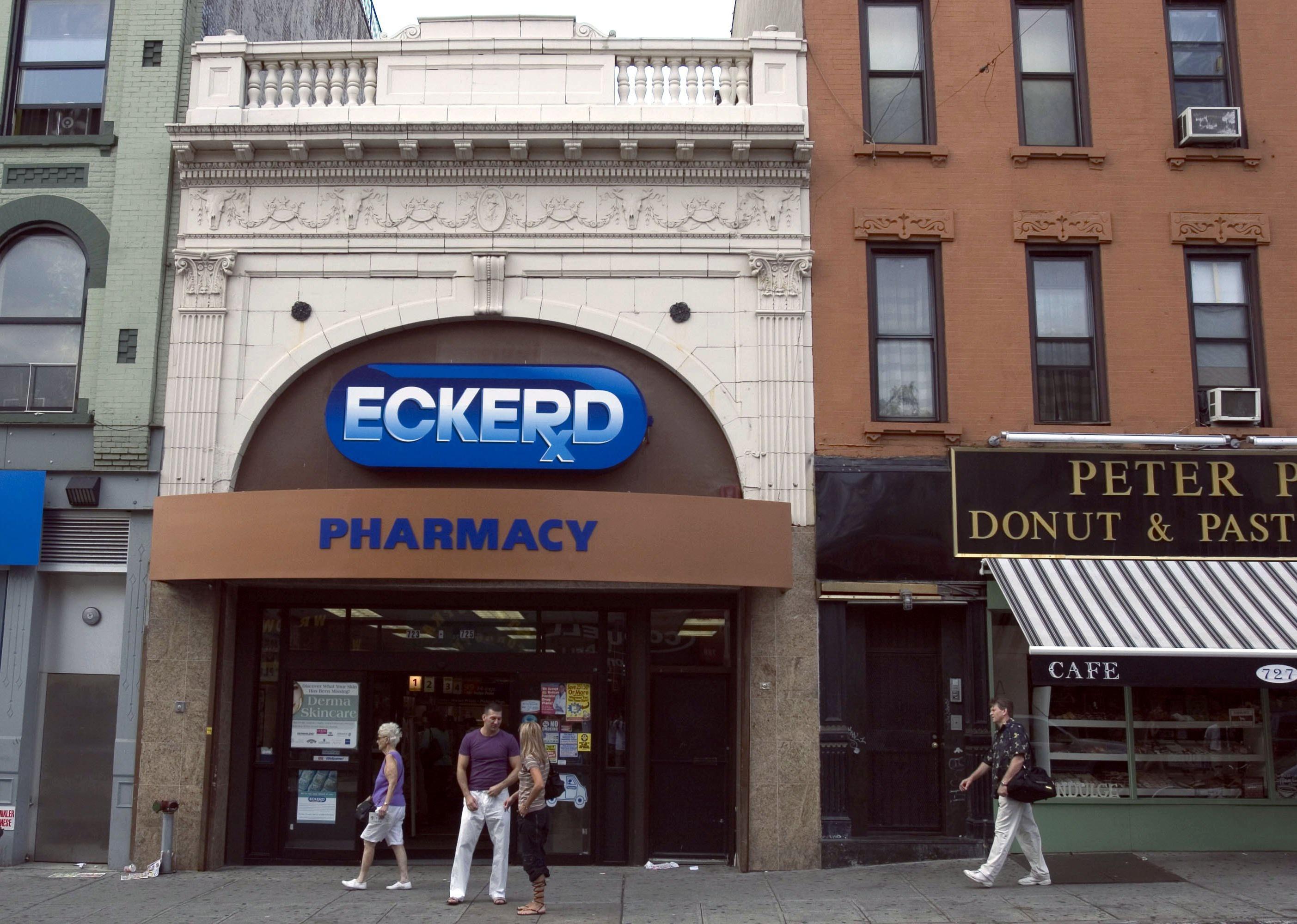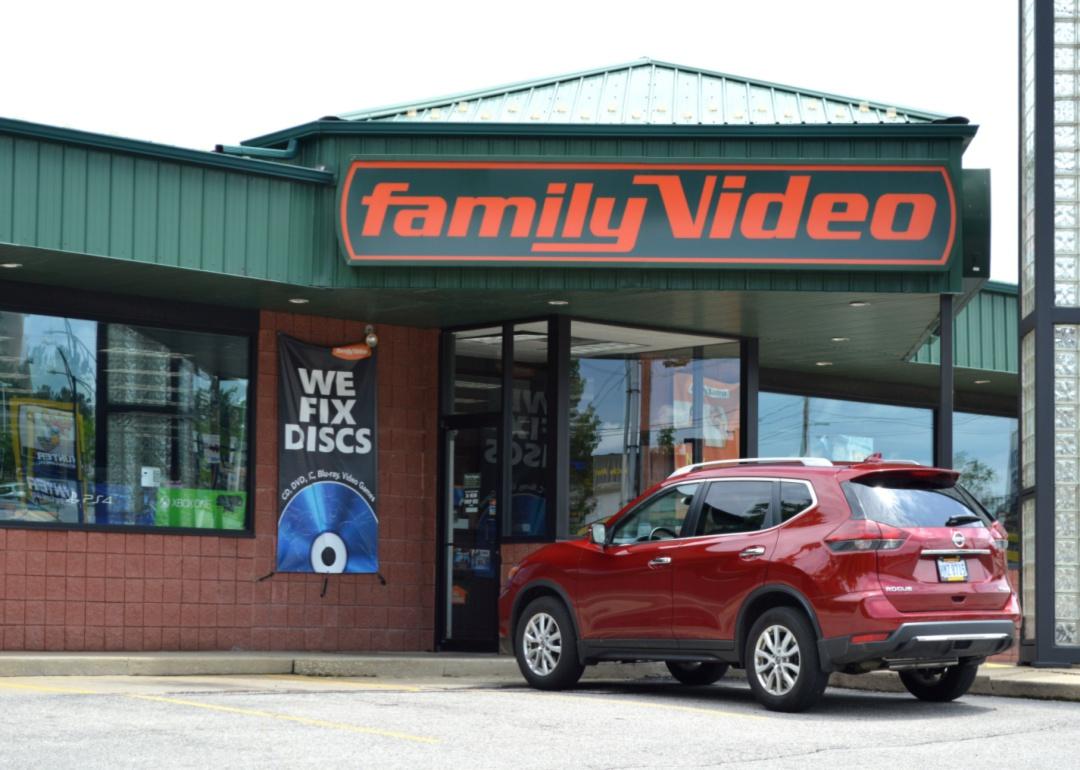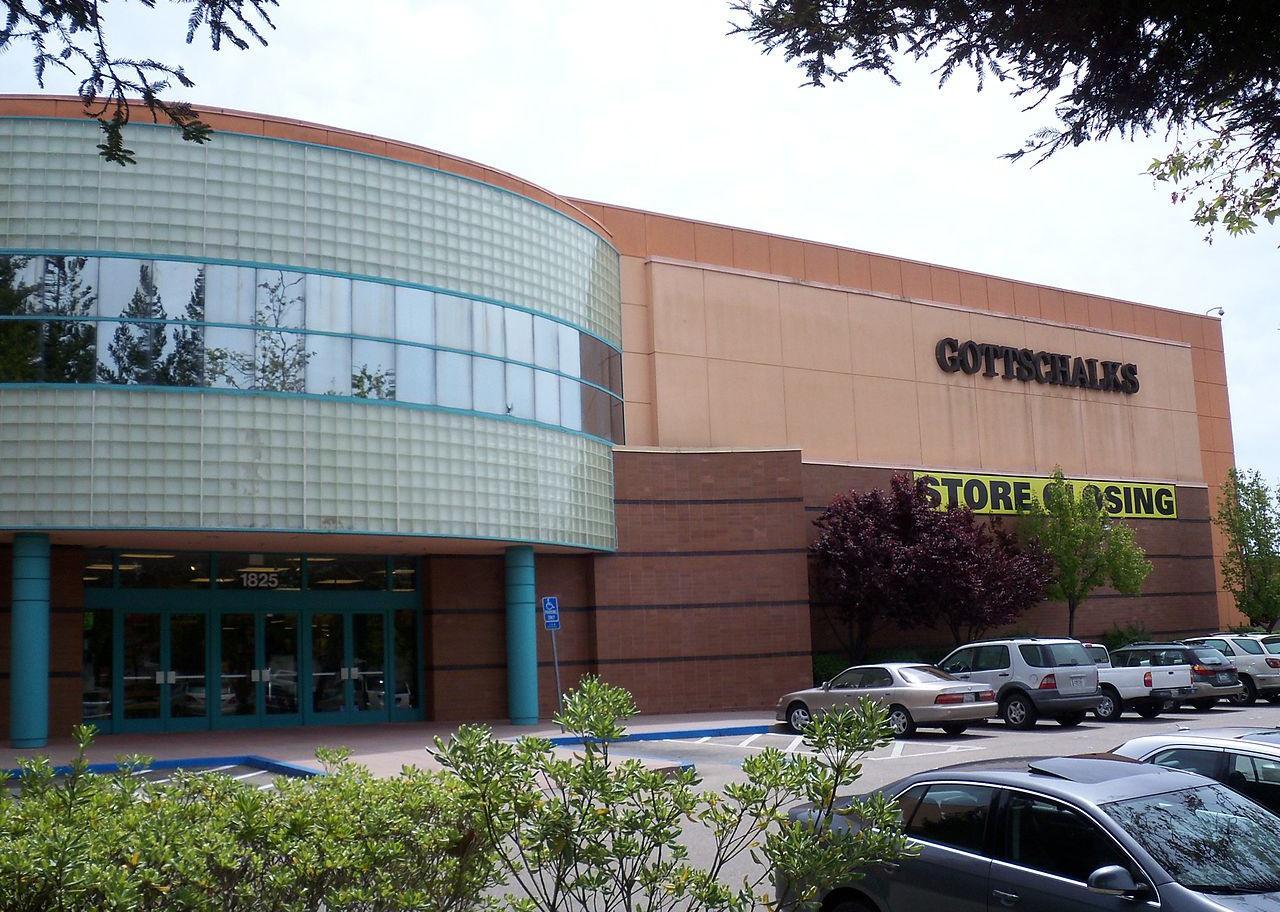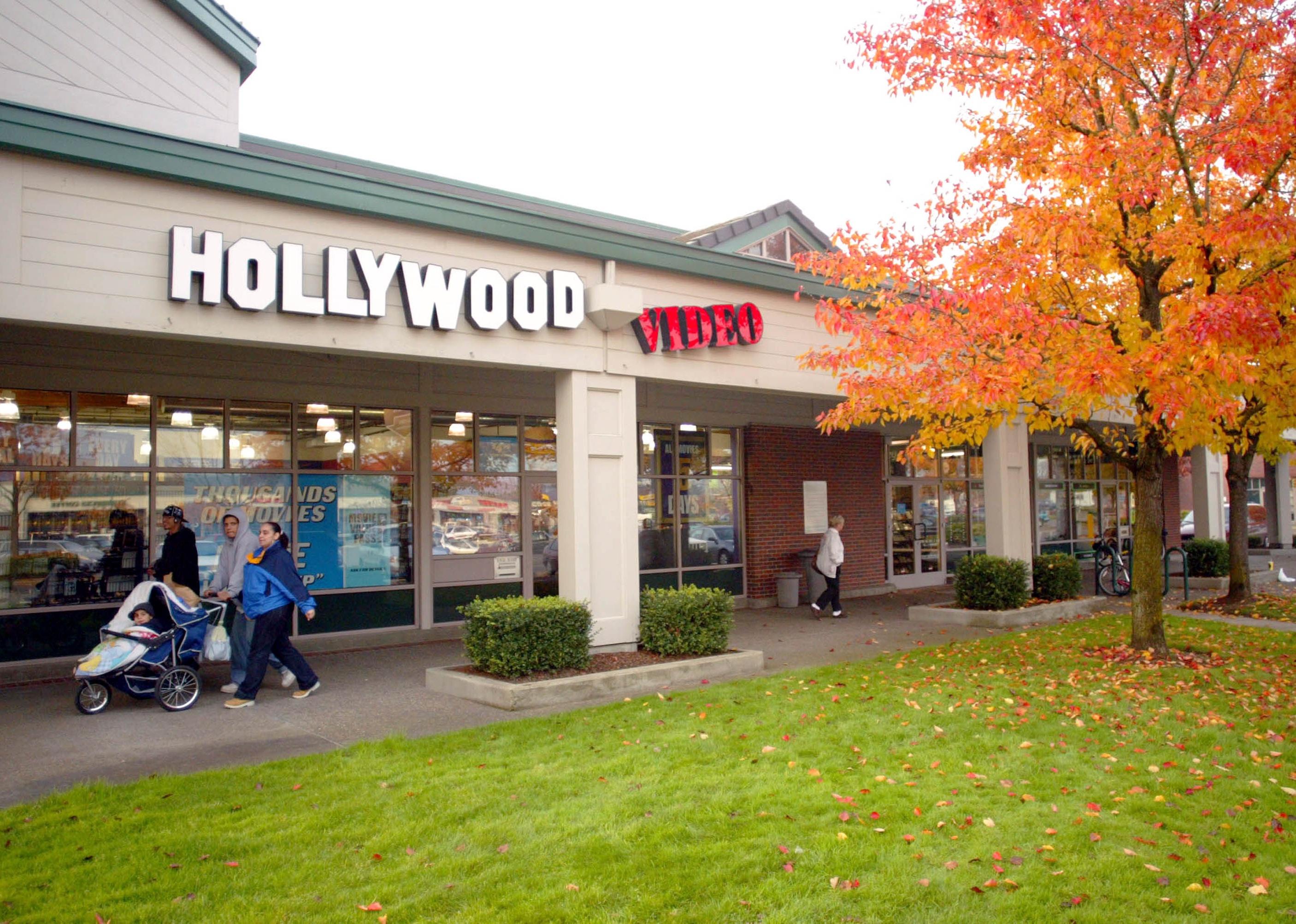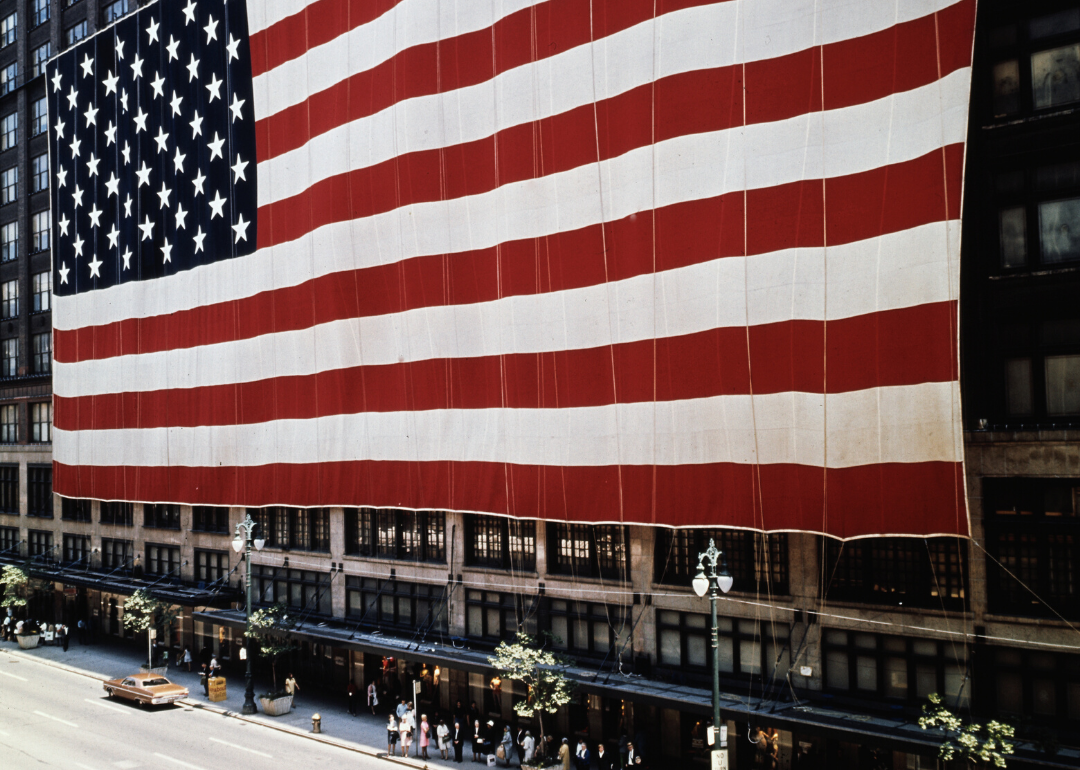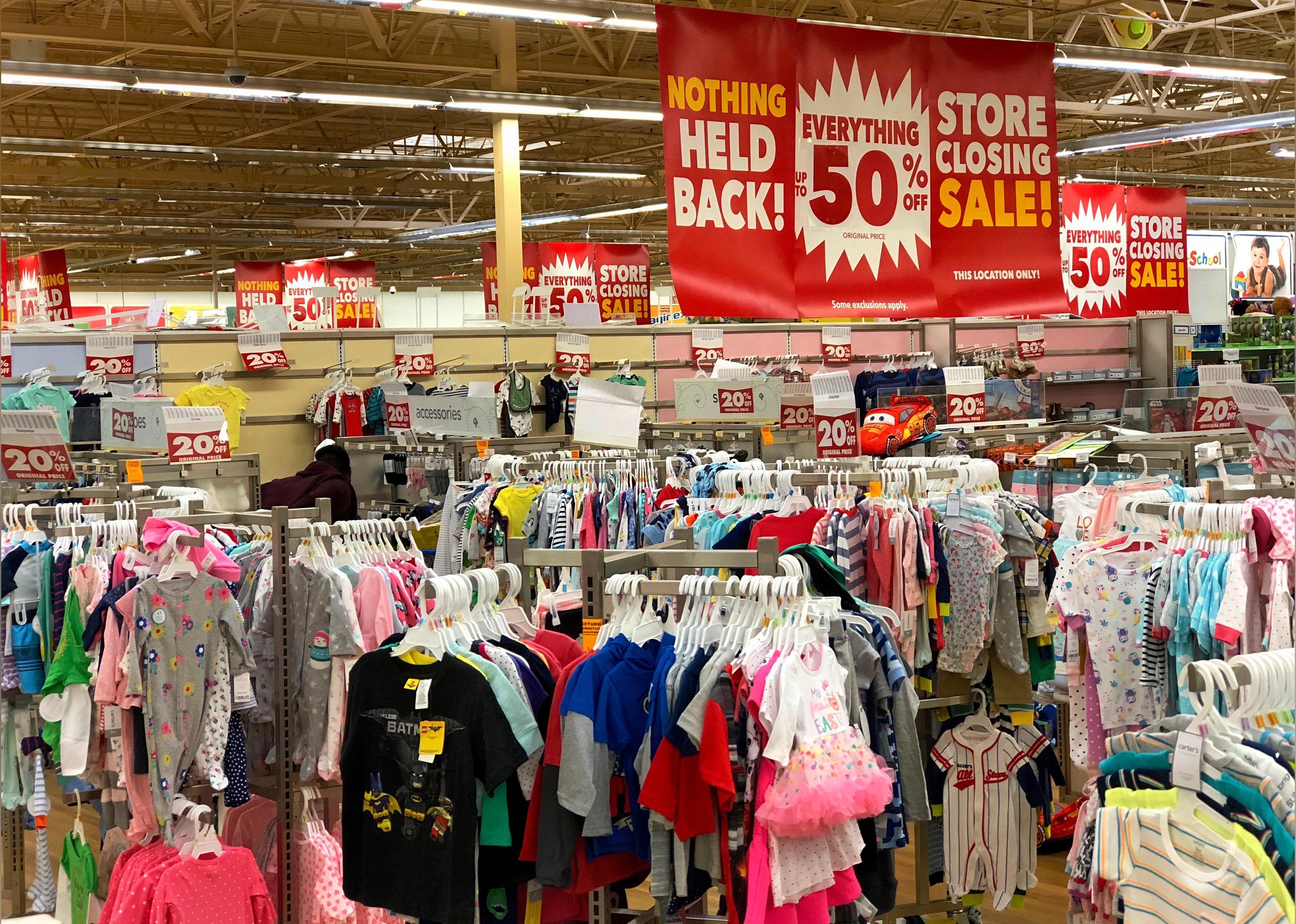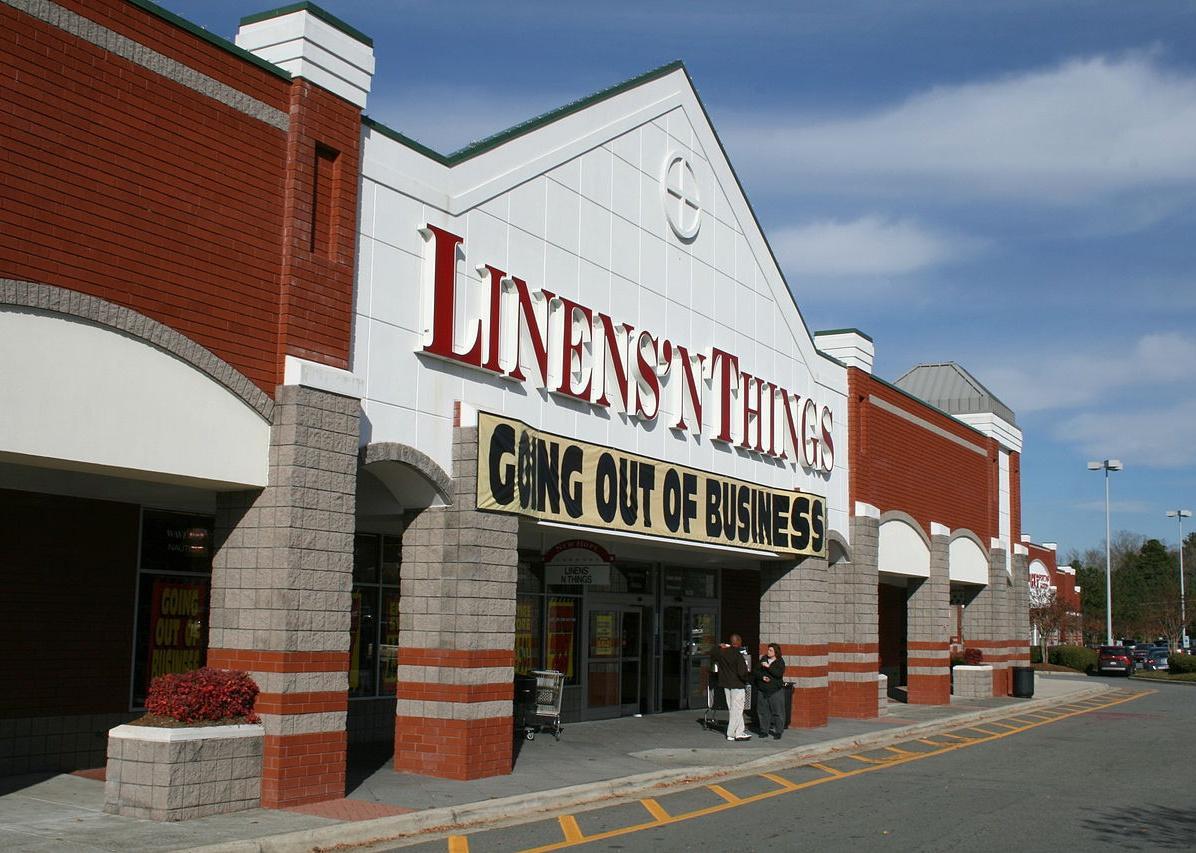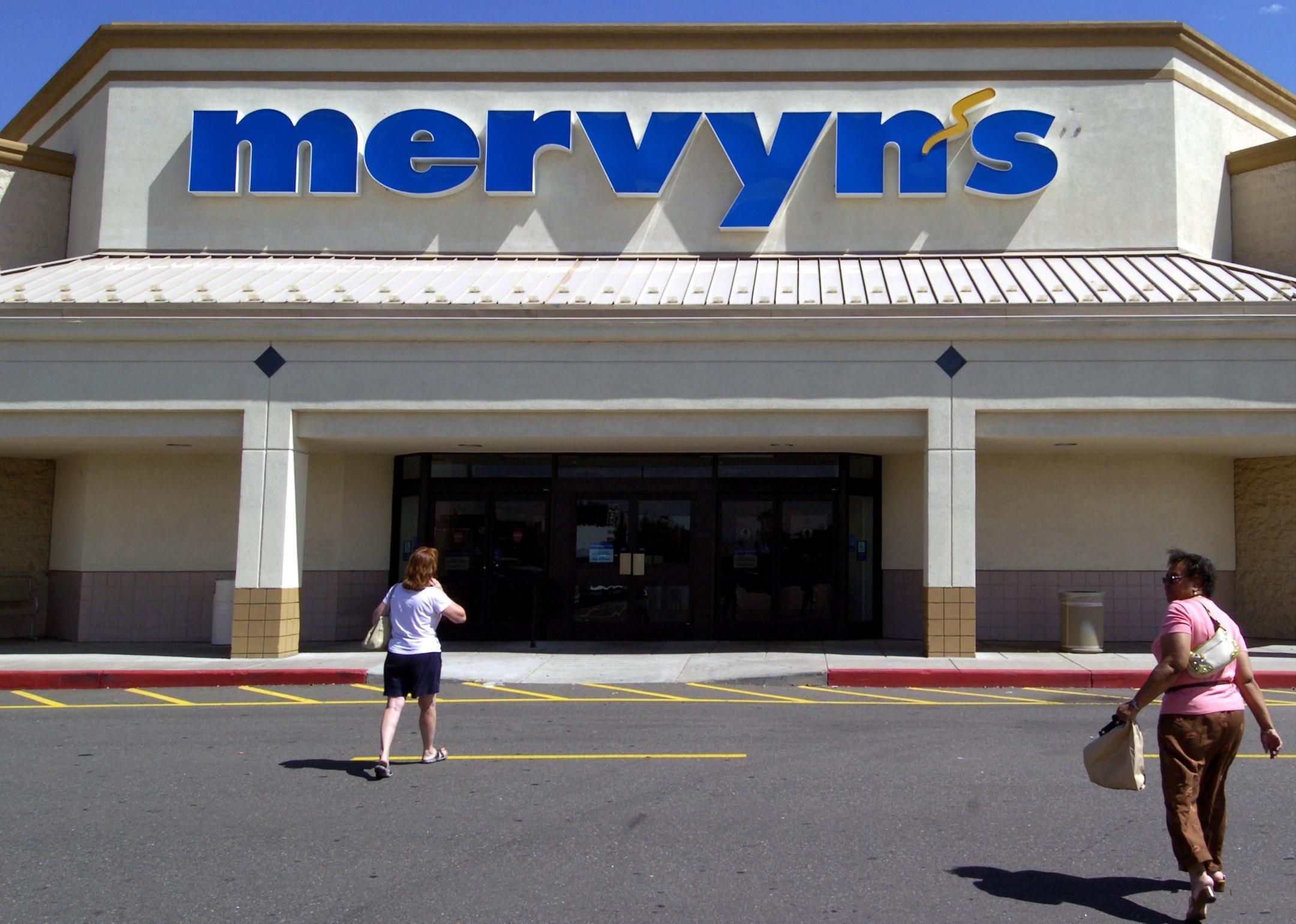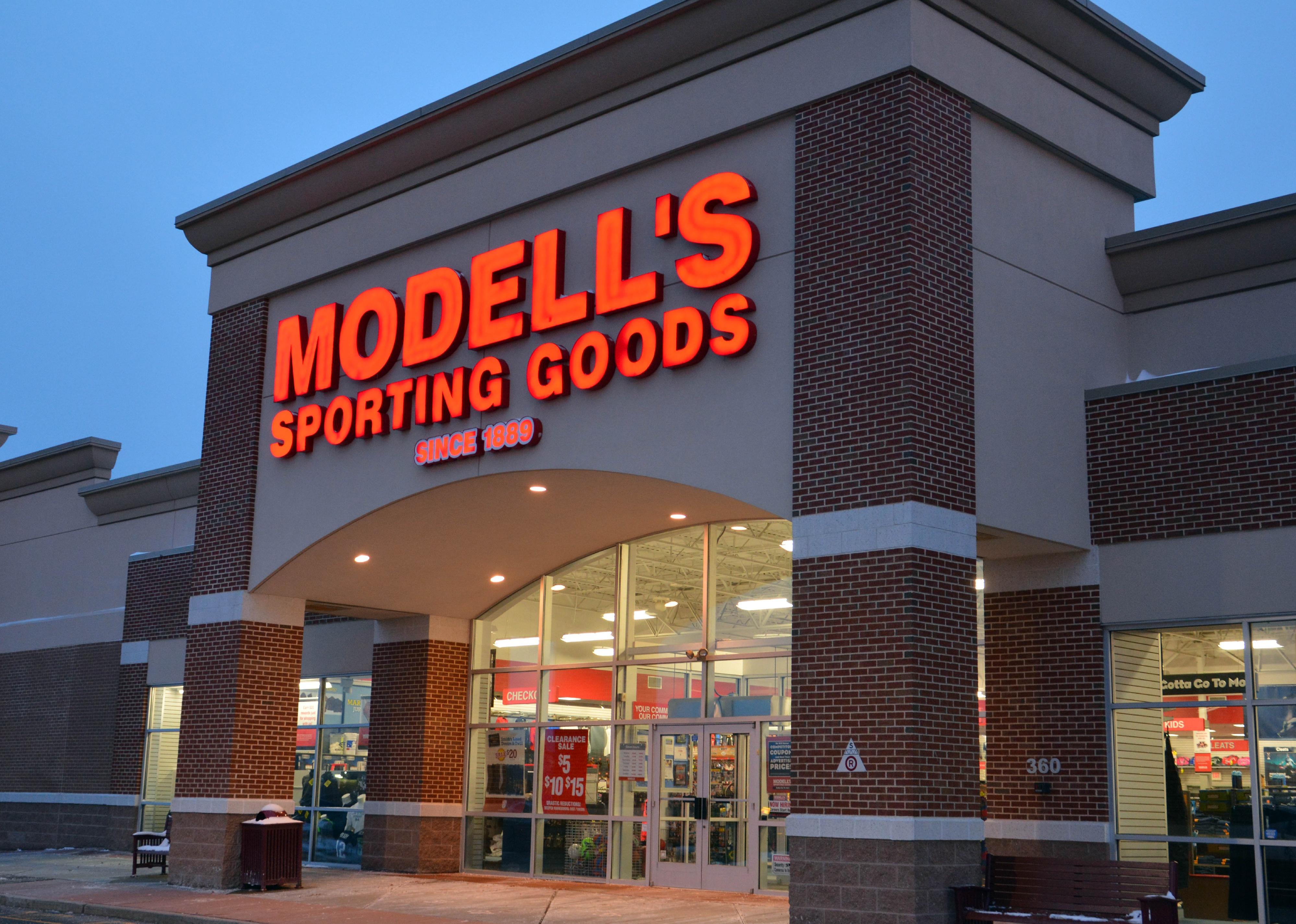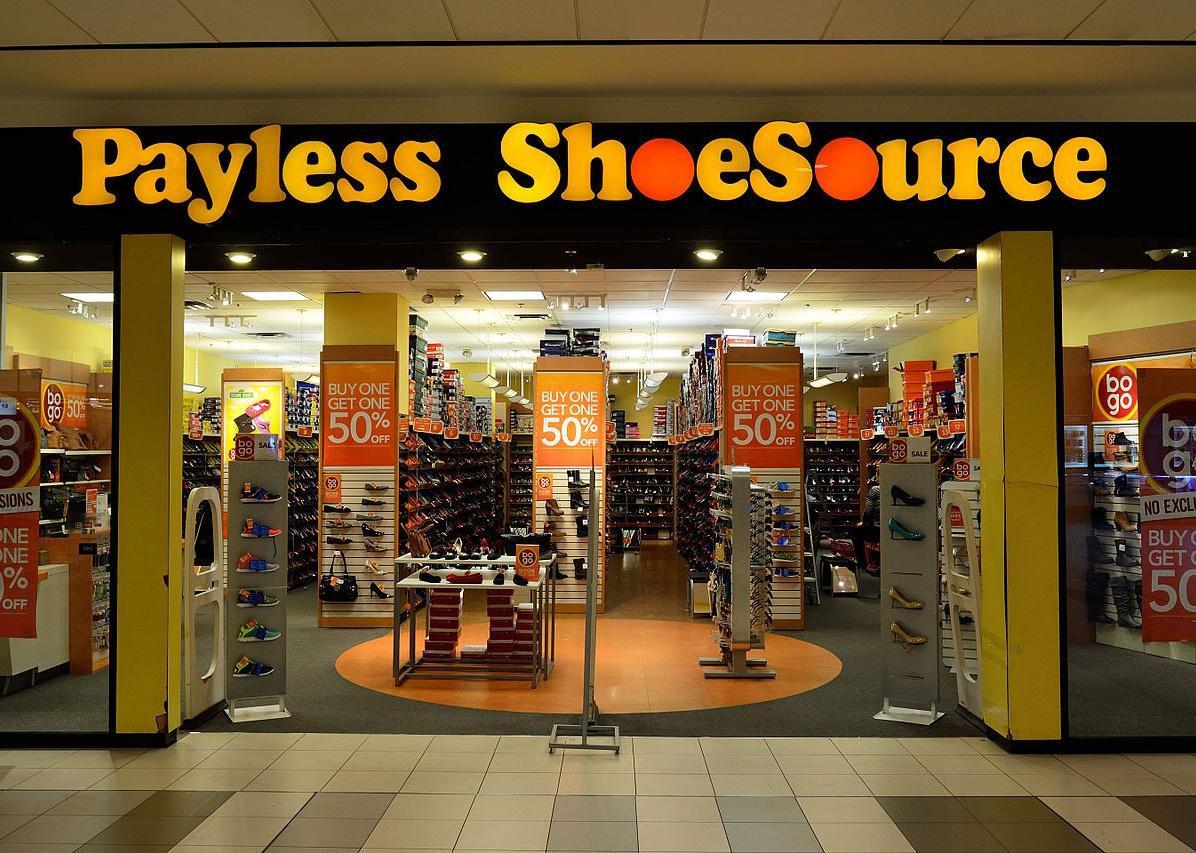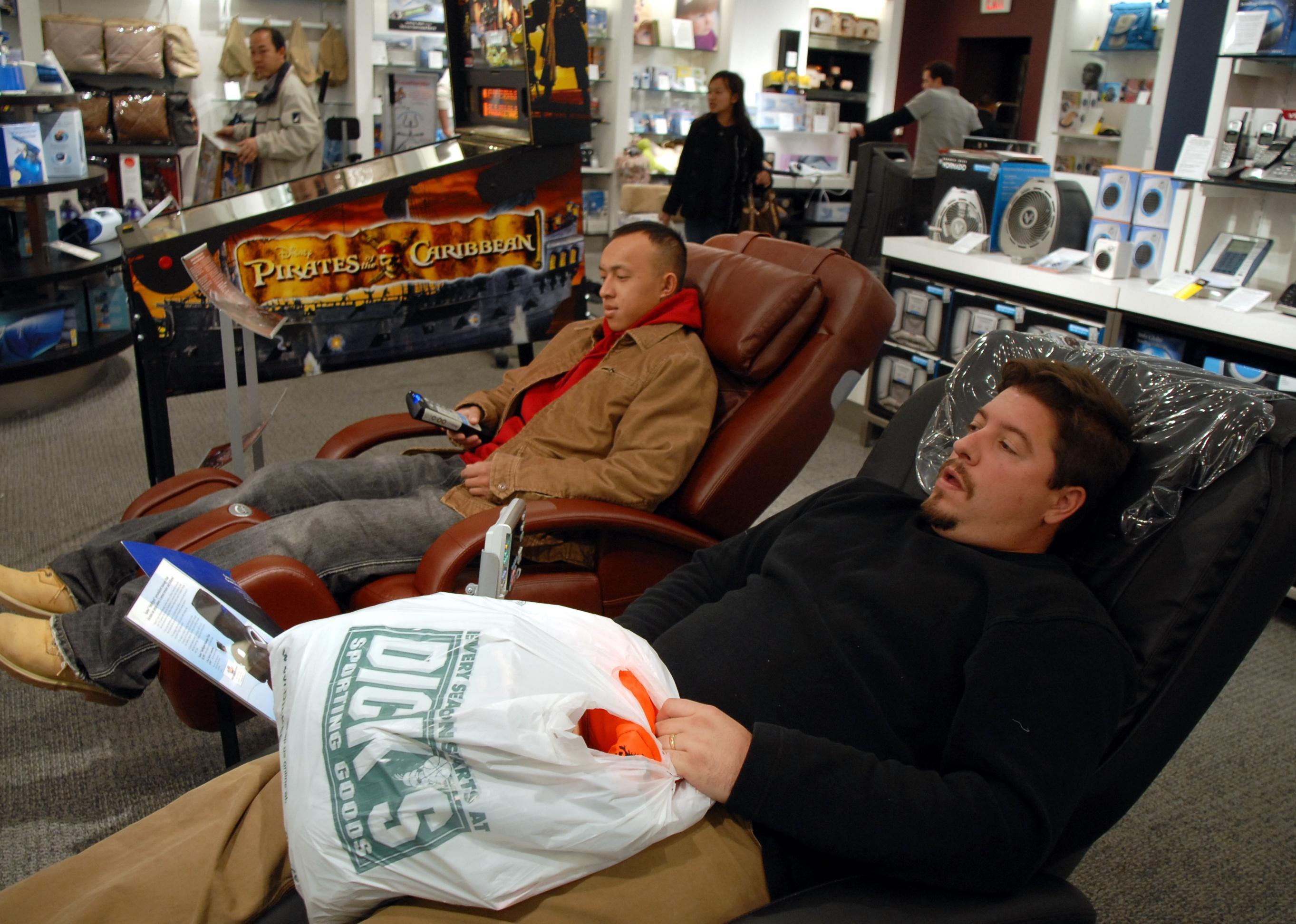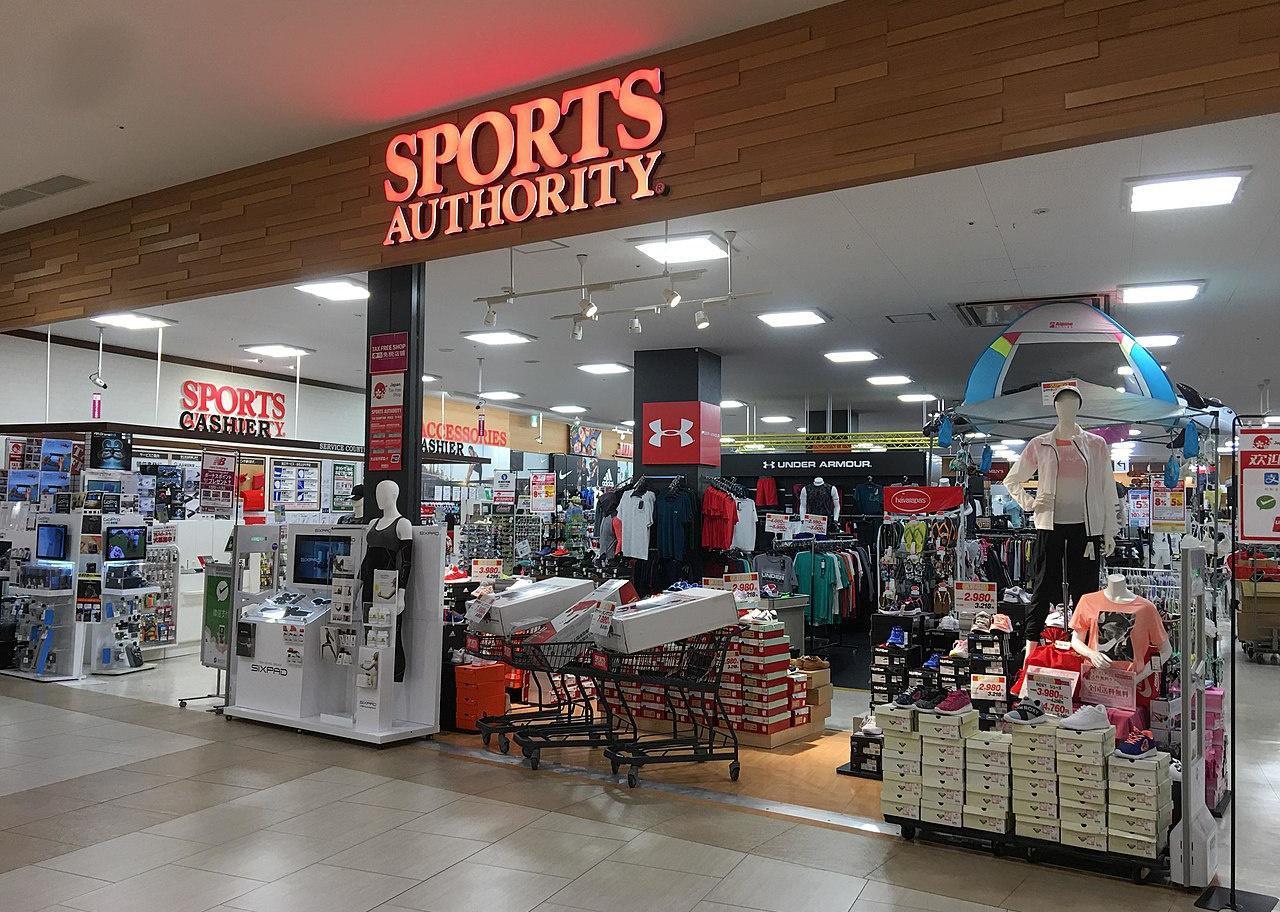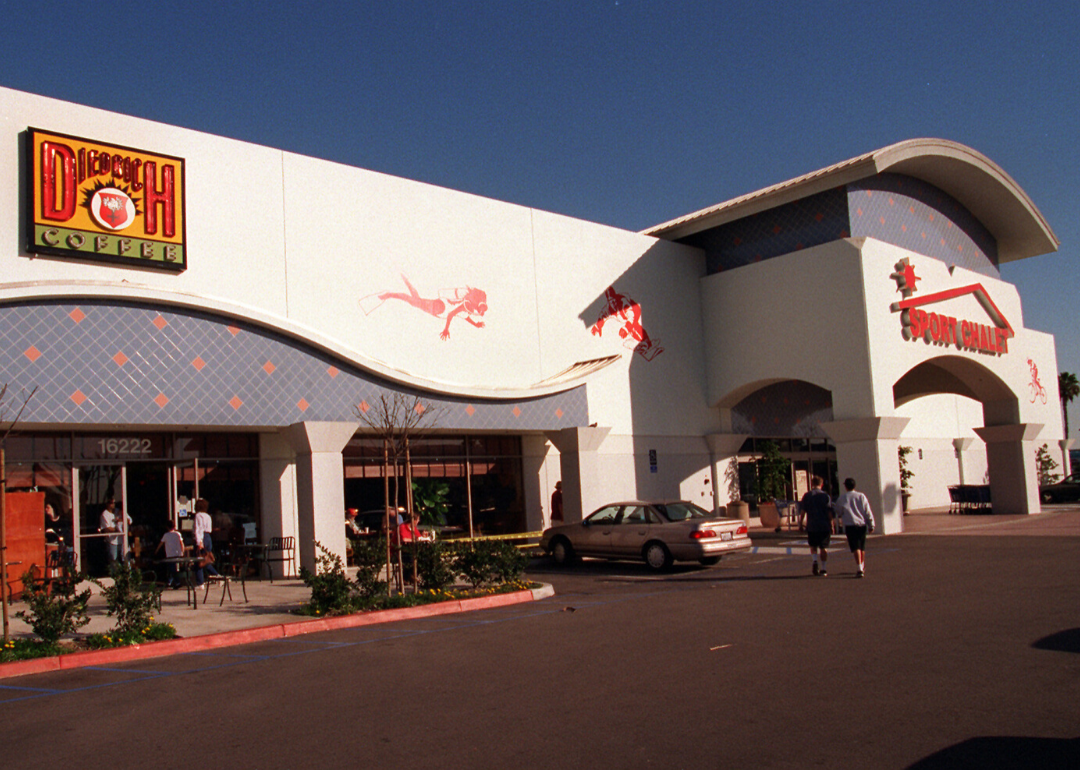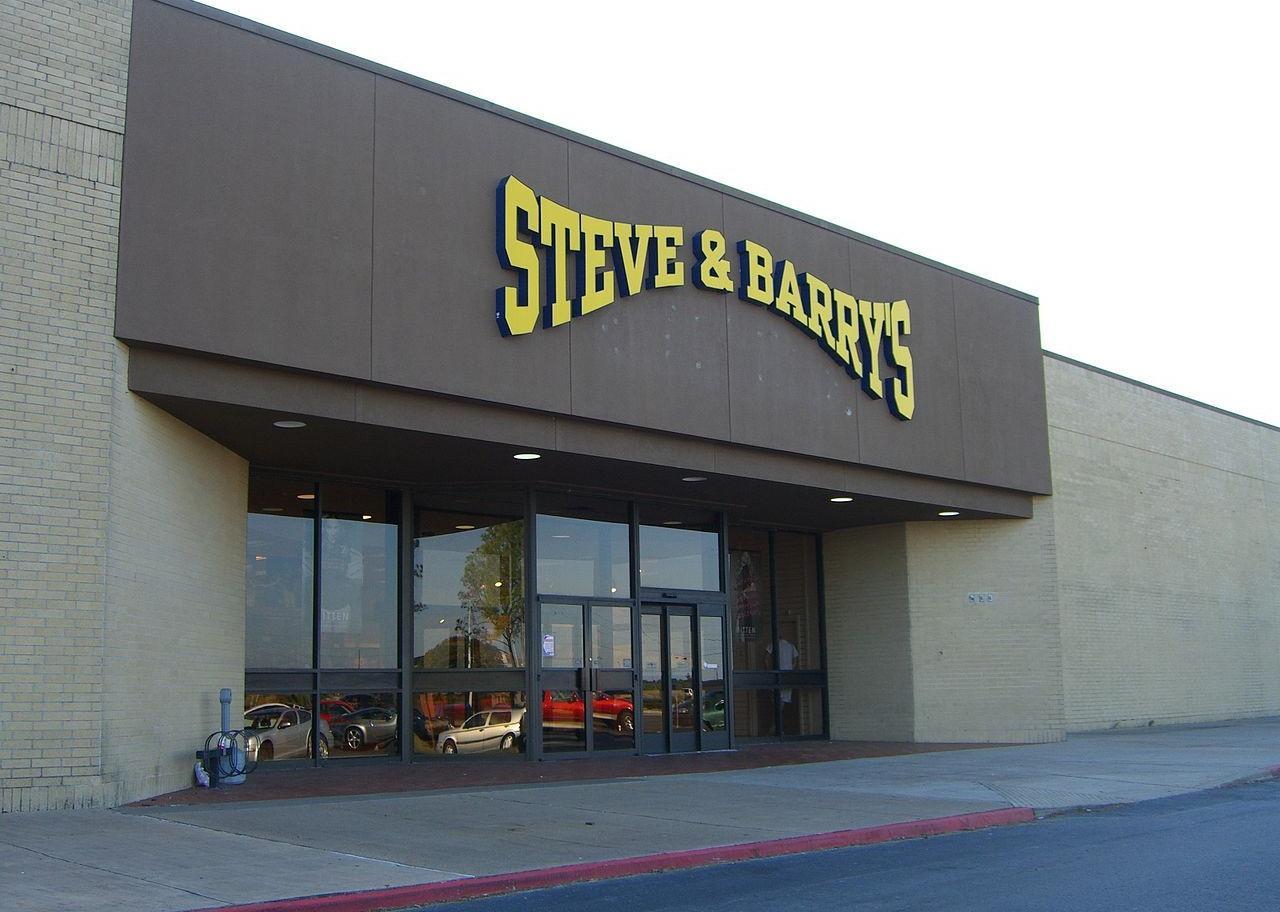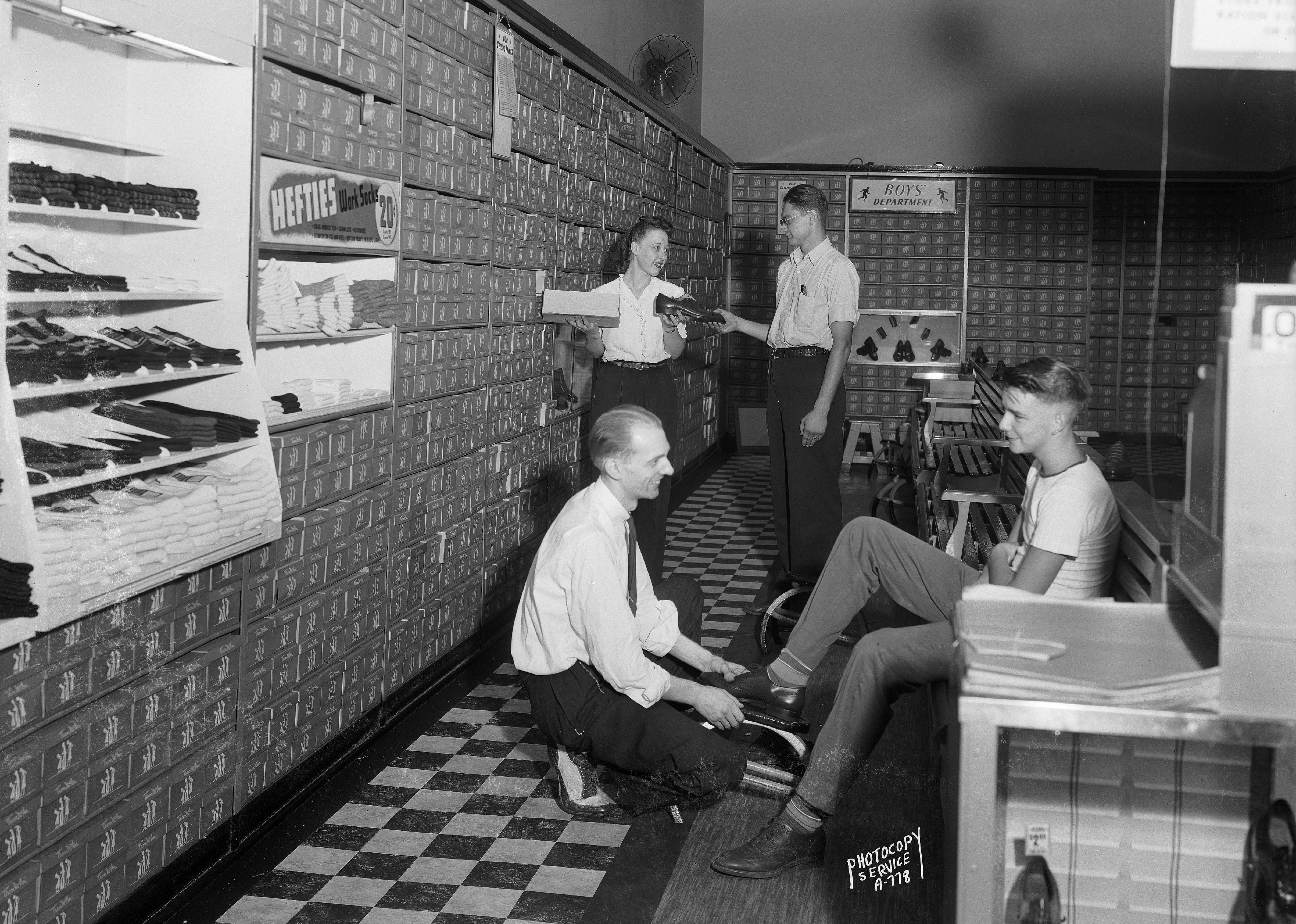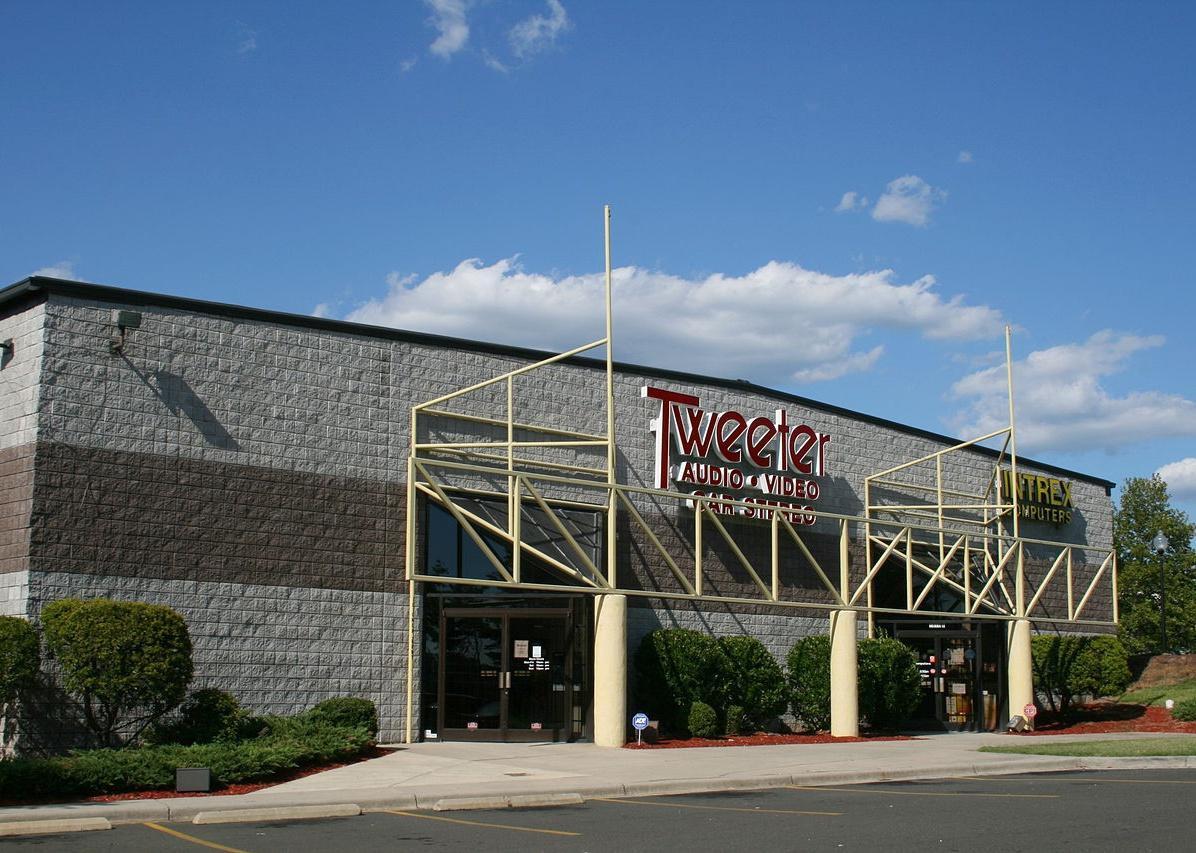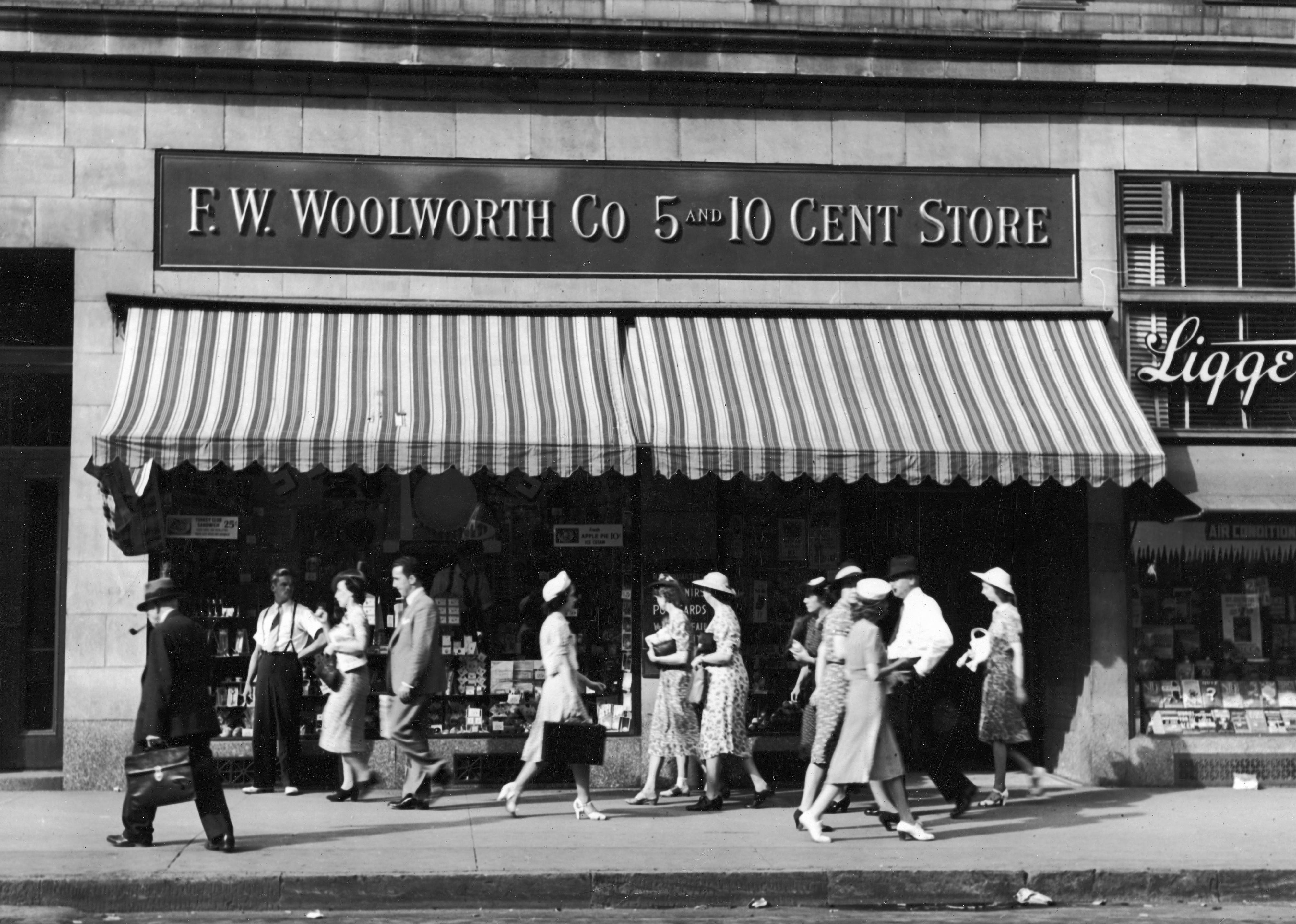Major retail chains that no longer exist
Adwo // Shutterstock
Major retail chains that no longer exist
The last Blockbuster video store in Australia closing down in the suburb of Morley.
At the start of this decade, many of America’s beloved major retailers announced that they’d be closing their stores—Papyrus, Macy’s, Pier 1 Imports, JCPenney—the list goes on. It’s a pattern that recurs throughout retail history. Chains grow quickly and incur new expenses as they expand. Then they hit the limit of their funding and growth opportunities and downsize to manage their debt and restructuring. Some can recover. Many, however, end up filing for bankruptcy and/or getting bought out and eventually folding.
It’s a familiar cycle. The economy improves, and the market becomes saturated with choice. When the economy slows, dips, and dives, very few can survive. With each cycle, stores that we thought would always be around, stores that defined our childhoods, even our parents’ childhoods, fizzle, fade, and become the stuff of retail history. Some are iconic brands like Tower Records, Thom McAn, and Kids “R” Us.
Stacker reviewed a variety of sources to take a close look at various major retail chains that no longer exist. Many of these chains led the pack at one point in history. Many of them even paved the way for their competitors, who eventually overtook them. Blockbuster, for example, was the largest video retailer worldwide and was valued at $3 billion at its height. Now there’s only one Blockbuster store left on the planet: in Bend, Oregon.
Other chains couldn’t keep up with the rise of e-commerce sites like Amazon. Sharper Image, for example, was once the only place where tech lovers could flock to play with high-end and niche gadgets. But then Amazon started selling similar products online.
While it’s all part of evolution and Darwinian economics, the sad reality is that when these stores die, parts of our memories go with them. Still, it’s a lesson that most businesses must learn: adapt with the times, or be lost forever. Are you ready to see the top 50 major retailers that no longer exist? Keep reading to see if your favorites made the list.
You may also like: Best big cities to live in America
![]()
Anthony92931 // Wikimedia Commons
Ames
The exterior entrance of an Ames store.
– Category: Department store
– Year founded: 1958
– Year defunct: 2002
– Lifetime: 44 years
Before there was Walmart—four years before, to be exact—there was Ames. The discount retailer used to sell a massive range of merchandise, including apparel, electronics, housewares, patio furniture, jewelry, and beyond. After 44 years of business, the corporation filed for bankruptcy, closing 327 stores and leaving 21,500 employees without jobs.
Monorail Orange // Wikimedia Commons
Anchor Blue
An Anchor Blue store having a going out of business sale.
– Category: Clothing
– Year founded: 1972
– Year defunct: 2011
– Lifetime: 39 years
Anchor Blue, a teen clothing chain launched in 1972, filed for bankruptcy in 2011 after 39 years of business. At its height, the chain had more than 300 stores in the United States. But it could not survive the 2009 economic downturn. By the time it closed, there were 117 stores, most of which were in California.
Nolichuckyjake // Shutterstock
BI-LO
A BI-LO supermarket and parking lot.
– Category: Grocery stores and supermarkets
– Year founded: 1961
– Year defunct: 2021
– Lifetime: 60 years
A former Winn-Dixie executive, Frank Outlaw, started the BI-LO supermarket chain in 1961 when he purchased four grocery stores in the Greenville, South Carolina area. Primarily located in the Southeast, BI-LO had hundreds of stores under its banner at its peak in the early 2000s but wound up announcing bankruptcy in 2018. After a substantial effort to restructure, the chain closed up its last locations in 2021.
Pat Greenhouse/TheBoston Globe // Getty Images
Blockbuster
A Blockbuster employee stocking Titanic movie covers.
– Category: Video rental
– Year founded: 1985
– Year defunct: 2014
– Lifetime: 29 years
Founded in 1985, Blockbuster was once the entertainment giant of the world, with more than 65 million registered customers and more than 9,000 stores in the United States alone. But the rise of streaming services like Netflix began to eat away at its profits, and in 2014 Blockbuster filed for bankruptcy with more than $900 million in debt.
BrokenSphere // Wikimedia Commons
Borders
Rows of bookshelves in Borders.
– Category: Bookstore
– Year founded: 1978
– Year defunct: 2011
– Lifetime: 33 years
Back in 2011, Borders—a book and music megastore—had to close its 400 stores around the country when the company was liquidated. Unfortunately, much of Borders’ stock was CDs and DVDs, at the critical tipping point when everyone was starting to go digital. Borders also failed to develop an online store, while other retailers like Barnes & Noble moved into online sales. The last year Borders actually made a profit was 2006.
You may also like: Can you guess these famous skylines?
Canva
Builders Square
A man looking at a tool box at a home improvement store.
– Category: Home improvement
– Year founded: 1970
– Year defunct: 1999
– Lifetime: 29 years
When Home Depot and Menards came into the picture, the sun was setting on Builders Square, one of the original large-scale home improvement stores. In 2011, the company filed for Chapter 11 and liquidated its remaining 117 stores. Builders Square had been struggling for a few years before that and had been sold off by Kmart in 1997. Still, the company failed to turn a profit and eventually shut its doors.
Spencer Platt // Getty Images
Century 21
The exterior of a Century 21 department store with red signage.
– Category: Department store
– Year founded: 1961
– Year defunct: 2020
– Lifetime: 59 years
Discount department store Century 21 was primarily located in the New York City area, though there were a handful of locations in other Eastern Seaboard locales. In 2020, thanks to diminished foot traffic brought about by the COVID-19 pandemic and poor e-commerce sales, the beloved chain filed for Chapter 11 bankruptcy, devastating budget-bound fashionistas everywhere. Not all hope is lost, however, as the company announced in 2022 that it would be reopening its lower-Manhattan flagship store, albeit under a slightly different name—Century 21 NYC—meaning we might see the return of this designer giant after all.
Scott Olson // Getty Images
Circuit City
A Circuit City employee demonstrates a camera for a man and a little girl.
– Category: Electronics
– Year founded: 1949
– Year defunct: 2009
– Lifetime: 60 years
Back in the 1970s and 1980s, Circuit City was on top of the electronics game. It helped to pioneer the big-box concept, making a one-stop shop for everything from televisions and stereos to refrigerators and automobiles, which spun off into CarMax. At its height, Circuit City had 1,520 stores across the United States and Canada. But in the 1990s, that began to change. CBS News analysis attributed this to stores becoming too big—and therefore too impersonal—and the fact that it stopped paying commissions to its sales team. When the financial crisis struck, Circuit City began closing stores and laying off its employees, eventually closing due to bankruptcy.
BRUCE BISPING/Star Tribune // Getty Images
CompUSA
A man walking out of a CompUSA store.
– Category: Electronics
– Year founded: 1984
– Year defunct: 2012
– Lifetime: 28 years
CompUSA, a consumer electronics retailer, ran into trouble in 2007 after prices dropped on its most lucrative product, personal computers. With the rise of stores like Best Buy, CompUSA struggled to make ends meet. It eventually filed for bankruptcy and sold its 103 stores. That is until the company made a brief comeback with a revamped sales approach, which also failed. It officially went out of business in 2012.
SVEN NACKSTRAND/AFP // Getty Images
Crazy Eddie
Eddie Antar is led by a police detective.
– Category: Electronics
– Year founded: 1971
– Year defunct: 2012
– Lifetime: 41 years
Old-school New Yorkers will remember the tale of Crazy Eddie quite well. The commercial alone is legendary. What started as an electronics storefront in Brooklyn grew to become the largest commercial electronics store in the New York metropolitan area, in addition to 43 stores up and down the Eastern Seaboard. But mostly what New Yorkers remember is how it all came crashing down when Eddie Antar, the founder, was discovered to be skimming money and manipulating the stock market. He fled the country to Israel and was later extradited to the U.S., where he served seven years in prison.
You may also like: Oldest cities in America
Canva
Crown Books
Books on shelves in a book store.
– Category: Bookstore
– Year founded: 1977
– Year defunct: 2001
– Lifetime: 24 years
Crown Books, a book retailer known for its deep discounts, came onto the scene in Maryland in 1977, and subsequently began to expand all over the country. Over the years, due to the death of its parent company and family drama between the owners, Crown Books went through a series of bankruptcies and was completely out of business by 2001.
Mike Mozart // Wikimedia Commons
Delia’s
A Delia’s storefront showing clearance clothing.
– Category: Clothing
– Year founded: 1993
– Year defunct: 2014
– Lifetime: 21 years
Women in their 30s today still remember Delia’s, the teen fashion chain that had 95 stores in malls across America. But as fast fashion brands like H&M, Forever 21, and Zara became more popular, Delia’s began to struggle. The company filed for bankruptcy in 2014: It had not turned a profit since early 2011.
Retaildesigner // Wikipedia
Dominick’s
A view of a grocery store from above.
– Category: Grocery store
– Year founded: 1918
– Year defunct: 2013
– Lifetime: 95 years
Chicagoans remember Dominick’s, a real-life example of the American Dream. Founded by Dominick DiMatteo more than 100 years ago, the grocery store chain became a beloved icon of the Chicago area. It was purchased by Safeway in 1998. At the time there were 116 stores and $2.6 billion in sales. Eventually, Dominick’s began to lose customers because it failed to adapt to shifts in the industry and lost customers because it didn’t see value in the prices of its goods. Customers started fleeing to competitors, and eventually operational costs were too high to maintain.
rblfmr // Shutterstock
Dressbarn
A woman walking in front of a Dressbarn with a red awning.
– Category: Clothing
– Year founded: 1962
– Year defunct: 2019
– Lifetime: 57 years
In 2019, all 650 Dressbarn stores were among the thousands of retail shops that closed. In Dressbarn’s case, the problems were declining customer numbers and sales volumes. Its parent company, Ascena Retail Group, owns Ann Taylor and Loft, which remain open.
Michael Brown // Getty Images
Eckerd’s
People standing on the sidewalk in front of Eckerd’s Pharmacy.
– Category: Drug store
– Year founded: 1898
– Year defunct: 2007
– Lifetime: 109 years
For more than 100 years, Eckerd’s was much more than a household name. It started in 1898 in Erie, Pennsylvania, when J. Milton Eckerd opened his first store. Over time, the empire had more than 2,000 stores in 20 states. In 2007, Rite-Aid Corporation acquired Eckerd’s and converted its stores to Rite-Aids in the quest to be the country’s largest drugstore chain, competing with Walgreens and CVS.
You may also like: Comparing minimum wage to the cost of living in every state
Eric Glenn // Shutterstock
Family Video
A Family Video location with a green roof and orange sign.
– Category: Video rental
– Year founded: 1978
– Year defunct: 2022
– Lifetime: 44 years
When Family Video finally went out of business in 2022, it was the last remaining brick-and-mortar media retail chain in the country. Located primarily in more rural towns and mid-sized cities, initially to avoid competition with Blockbuster, the company had managed to survive for so long because it owned all of the land and buildings its shops were built on and in. It also had worked hard to diversify its offerings, at one point even partnering with a pizza brand to give customers a one-stop-shop for their night in. Like many other businesses on our list, Family Video blamed the pandemic for its failure, citing the lack of foot traffic and fewer movie releases as major problems.
Canva
Frank’s Nursery & Crafts
Baskets of blooming flowers in a nursery.
– Category: Home decor and craft stores
– Year founded: 1957
– Year defunct: 2004
– Lifetime: 47 years
Frank’s Nursery & Crafts, one of the country’s largest lawn and garden retailers, was founded in 1957 in Detroit. The store stocked its shelves with live plants, fertilizers, and garden tools. But, a weakening economy took its toll on the chain, which at the time of its closing operated 169 stores in 14 states. It filed for bankruptcy in 2004 after listing $141 million in debt and failing to find a loan to bail it out.
Canva
Friedman’s
A box of gold and silver rings on display.
– Category: Jewelry
– Year founded: 1920
– Year defunct: 2008
– Lifetime: 88 years
The Oklahoma jewelry chain Friedman’s Jewelers was founded in 1920 and remained a family-run business until 1990. It had 20 stores across the state. But for a few years before closing, the company had experienced financial instability and allegations of wrongdoing, including a slew of civil lawsuits. Friedman’s filed for Chapter 11 bankruptcy protection in 2005.
Michael N. Todaro/Golfsmith // Getty Images
Golfsmith
A man putting a golf ball on green turf inside a store.
– Category: Sports
– Year founded: 1967
– Year defunct: 2016
– Lifetime: 49 years
Once the largest golf retailer in the country, and the world, Golfsmith International filed for bankruptcy due to a multi-million dollar mountain of debt. When it filed under Chapter 11, the chain had 109 stores in the United States.
Mrwrite // Wikimedia Commons
Gottschalks
A Gottschalks exterior with a store closing sign.
– Category: Department store
– Year founded: 1904
– Year defunct: 2009
– Lifetime: 105 years
One of the biggest department store chains in America, Gottschalks ended its 105-year legacy with a court-ordered liquidation. Founded by Emil Gottschalk, a German immigrant in 1904, Gottschalks had 58 department stores in the Western U.S. When it folded, the company had somewhere between $100 million and $500 million in debt and up to 25,000 creditors.
You may also like: How much the typical home cost in your state in 1950
Craig Mitchelldyer // Getty Images
Hollywood Video
People walking past a Hollywood Video store.
– Category: Video rental
– Year founded: 1988
– Year defunct: 2010
– Lifetime: 22 years
Hollywood Video was yet another Netflix casualty. Falling victim to losing customers thanks to the rise of DVDs through the mail and streaming sites, Hollywood Video closed its 1,900 remaining stores in 2010. The company reported debts between $500 million and $1 billion when it made the decision.
Bettmann // Getty Images
Hudson’s
A giant American flag on the side of a building.
– Category: Department store
– Year founded: 1881
– Year defunct: 2001
– Lifetime: 120 years
The J.L. Hudson Company, aka Hudson’s, was a Detroit legend. Opened in 1911 by Joseph Lowthian Hudson, the iconic Detroit department store was an anchor for the then-thriving city. At the time, it was the second-biggest department store in America, second only to Macy’s in New York. Hudson’s was also the tallest department store in the world at one time. Over the years, however, Detroit’s population began to dwindle as the economy of the city declined. As the people faded away, so did Hudson’s, including stores in the suburbs and elsewhere around the nation. The flagship store closed in January 1983 after 102 years in business. The building stood empty until 1998 when it was demolished, ending an era for Detroit.
MarkBuckawicki // Wikimedia Commons
Just for Feet
Athletic shoes on a display wall.
– Category: Shoes
– Year founded: 1977
– Year defunct: 2004
– Lifetime: 27 years
Just For Feet was one of the original superstores in America. Founded by Harold Ruttenberg, the first store opened in 1988 in Birmingham, Alabama, offering a massive selection of athletic shoes at deeply-discounted prices. The brand began to expand like wildfire. Just for Feet was named America’s sixth-fastest-growing company by Fortune magazine in 1997. In 1999, Ruttenberg scored an enviable time slot for a Super Bowl ad, but the commercial that ran was so culturally and racially insensitive that it spiraled into a host of image issues for Just for Feet. The company was forced to file for Chapter 11, and its assets were sold in 2000.
Philip Rink Jr. // Shutterstock
Kaufmann’s
The historic ornamental brass clock Kaufmann’s clock.
– Category: Department store
– Year founded: 1871
– Year defunct: 2006
– Lifetime: 135 years
Kaufmann’s Department Store, an icon of historic Pittsburgh, was founded in 1871 by Jason and Isaac Kaufmann, two brothers who had emigrated from Germany. The business grew quickly and acquired several adjacent addresses. Over the years, the building received many interior touches and updates, many of which are icons themselves, like the Kaufmann clock and the grand staircase. This building remained the flagship, as other branches popped up in Pennsylvania, Ohio, and New York. In 2006, the brand and regional branches were purchased by and converted into Macy’s.
Jeff Gritchen/Digital First Media/Orange County Register // Getty Images
KB Toys
Two women laughing while holding toys in a crowded toy store.
– Category: Toys
– Year founded: 1922
– Year defunct: 2009
– Lifetime: 87 years
From 1922 to 2009, KB Toys was America’s reigning toy store, with more than 1,300 stores across the country. Eventually, however, the company could not keep up with competitor Toys “R” Us, which acquired KB Toys’ website, trademarks, and intellectual property rights. There was talk of a KB Toys revival after Toys “R” Us went out of business, but that has yet to come to fruition.
You may also like: Best places to retire in America
Sheila Fitzgerald // Shutterstock
Kids ‘R’ Us
A Kids R Us store closing sale filled with clothing and toys.
– Category: Clothing
– Year founded: 1983
– Year defunct: 2004
– Lifetime: 21 years
In 1983, Kids “R” Us opened as an offshoot of Toys “R” Us. The company sold children’s clothing at discount prices. The company was open for 20 years, with 146 stores. It closed in 2004 following prolonged disappointing sales.
Ildar Sagdejev // Wikimedia Commons
Linens ‘n Things
A white and red brick exterior of Linens ‘n Things.
– Category: Housewares and accessories
– Year founded: 1975
– Year defunct: 2008
– Lifetime: 33 years
Linens ‘n Things was a popular niche retailer that sold household items. At its height, it had 589 stores all over the country. Its demise was caused by a variety of things, including a decline in housing sales, higher prices for goods made in China, and the burden of paying $650 million in debt. By 2008, the company had filed a reorganization plan but was forced to have a liquidation sale.
MARLIN LEVISON/Star Tribune // Getty Images
Marshall Field’s
The beauty department of a Marshall Field’s store.
– Category: Department store
– Year founded: 1852
– Year defunct: 2006
– Lifetime: 154 years
Marshall Field’s, whose flagship was in Chicago, was an icon for the Windy City. Founded in 1852, the original store on State Street was once the largest in the world. The brand expanded and added more department stores all over the country. Eventually, through a series of sales to various other retailers, the then-parent company of Marshall Field’s, the May Company, was acquired by Federated Department Stores, Inc., the operator of Macy’s, and Marshall Field’s became part of that empire.
SKIDZ // Wikimedia Commons
Merry-Go-Round
A group of models smiling while walking down the street in an ad for Merry-Go-Round.
– Category: Clothing
– Year founded: 1968
– Year defunct: 1996
– Lifetime: 28 years
Merry-Go-Round, the flagship brand of Merry-Go-Round Enterprises, was one of the more popular fashion brands in the 1980s and 1990s. In fact, the company purchased the Chess King chain in 1993, which doubled its size. But after being one of the leaders in fashion for a few decades, a few false moves started to put it on a decline—namely, the company bet on styles that just weren’t popular with teens at the time. Eventually, it was forced to file for Chapter 11 and began to liquidate assets in 1996.
Jerry Cleveland/The Denver Post // Getty Images
Mervyn’s
Two women walking into a Mervyn’s store.
– Category: Department store
– Year founded: 1949
– Year defunct: 2009
– Lifetime: 60 years
What started as a single department store in San Lorenzo, California, erupted into a West Coast empire. Selling work pants and school clothes, the department store was frequented by middle-class families. At its peak, Mervyn’s had 300 stores in 16 states. Eventually, owner Mervin Morris sold the name to Dayton Hudson, which is where the downfall began. The new owner couldn’t keep up with changing economic times and declared bankruptcy in 2008.
You may also like: Best lake towns to live in
Dorann Weber / Contributor // Getty Images
Modell’s Sporting Goods
The brick exterior of a Modell’s Sporting Goods store.
– Category: Camping, sports, or athletic stores
– Year founded: 1889
– Year defunct: 2020
– Lifetime: 131 years
Diminished sports apparel sales and millions of dollars of debt are what finally brought Modell’s Sporting Goods to its knees after a 131-year run. The Manhattan-founded retail chain had 141 stores and some 3,600 employees when it closed its doors in 2020. But folks who can’t imagine buying jerseys and cleats without “going to Mo’s” can still use the store’s website to get everything they need.
Canva
Noodle Kidoodle
A little girl playing with food toys.
– Category: Toys
– Year founded: 1931
– Year defunct: 2000
– Lifetime: 69 years
Noodle Kidoodle was a chain of toy stores that sold educational toys for kids. Its slogan was “Kids learn best when they’re having fun!” But in 2000, a competitor, Zany Brainy, which was owned by Toys “R” Us, acquired Noodle Kidoodle, which ultimately led to Zany Brainy’s bankruptcy and the end of both chains.
Raysonho @ Open Grid Scheduler / Grid Engine // Wikimedia Commons
Payless ShoeSource
A Payless ShoeSource store.
– Category: Shoes
– Year founded: 1956
– Year defunct: 2019
– Lifetime: 63 years
Payless ShoeSource was one of the top retailers of discount shoes. It had more than 3,500 stores in 40 different countries. The company filed for Chapter 11 in 2017, which resulted in the shuttering of 673 stores. In 2019, the company announced that it would close its 2,100 stores in the United States, as well as shut down its e-commerce site.
Bruce Bennett // Getty Images
Pier 1 Imports
The exterior of a Pier 1 Imports store with a blue and white sign.
– Category: Home decor and craft stores
– Year founded: 1962
– Year defunct: 2020
– Lifetime: 58 years
First opened in San Mateo, California, to sell bean bag chairs, incense, and love beads to hippies, Pier 1 Imports was known for stocking some of the most unique home goods on the market. In 2020, the company filed for Chapter 11 bankruptcy, citing the COVID-19 pandemic and its inability to find a buyer as reasons for its failure. The website is still functional, though, for folks in the market for a good throw pillow or off-the-wall china pattern.
Michael Ochs Archives // Getty Images
Sam Goody
Two men looking into the glass windows of a Sam Goody store.
– Category: Music
– Year founded: 1951
– Year defunct: 2006
– Lifetime: 55 years
Everyone’s favorite record store started in Manhattan in the 1940s. Later, this shop became the flagship store in a booming empire of record and CD stores across the country. In fact, the flagship location accounted for 7% of the nation’s sales of 33 ⅓ rpm records in 1955. Eventually, owner Sam Goody sold the business to the American Can Company but stayed on as a consultant for a few years. The company was sold several more times. Ultimately, all of the Sam Goody locations were transformed into FYE entertainment retail stores.
You may also like: 50 best beach towns to live in
David Jennings/Digital First Media/Boulder Daily Camera // Getty Images
Sharper Image
Two men sitting in massage chairs at a Sharper Image store.
– Category: Electronics
– Year founded: 1977
– Year defunct: 2008
– Lifetime: 31 years
What happened to the Sharper Image? In a word: Apple. But it’s a little more complicated than that. First, it was Best Buy and Amazon, which started stocking the same high-end, cutting-edge products that previously could only be found in stores like Sharper Image. But once Apple became the new cool kid on the block for techies, Sharper Image’s days were numbered. Investors bought the company, but in 2008, it declared bankruptcy.
Daniel Ramirez // Wikimedia Commons
Sports Authority
A Sports Authority entrance.
– Category: Sports
– Year founded: 1928
– Year defunct: 2016
– Lifetime: 88 years
Sports Authority, one of the largest sports retailers in the country, was known for its deep discounts. In 2006, the peak year for the retailer, the company was purchased by a hedge fund. But mounting debt forced the company to call it quits in 2016 after filing for bankruptcy. The company could not make a deal with its creditors and lenders and was forced to sell all its assets.
Mark Boster/Los Angeles Times // Getty Images
Sports Chalet
A Sports Chalet entrance and parking lot.
– Category: Sports
– Year founded: 1959
– Year defunct: 2016
– Lifetime: 57 years
Yet another sports retail chain to bite the dust in 2016, Sport Chalet shuttered 47 stores in California, Arizona, and Nevada. The chain started in 1959 with one tennis and ski shop. Over time, it developed into one of the larger regional chains that offered a wide range of services, even scuba training and certification. In 2014, the chain had more than $50 million in debt. It was bought by Vestis Retail Group. Two years later, the chain met its demise.
Nick22aku // Wikimedia Commons
Steve & Barry’s
A Steve & Barry’s store.
– Category: Casual clothing
– Year founded: 1985
– Year defunct: 2009
– Lifetime: 24 years
In 2008, Steve & Barry’s was forced to shut down. The company was known for its substantially low prices. After filing for bankruptcy and being sold to investment firms for $168 million, the new owners also filed for bankruptcy, and a plan was put in motion to liquidate its 173 stores.
Canva
The Limited
A shopping mall interior.
– Category: Clothing
– Year founded: 1957
– Year defunct: 2017
– Lifetime: 60 years
When it came to women’s casual clothing and workwear, The Limited was one of those at the top, with more than 750 stores all over the U.S. The Limited also acquired Victoria’s Secret and Abercrombie & Fitch and launched the wildly popular teen store, Limited Too. But with the rise of e-commerce sites and fast fashion brands, stores like The Limited struggled. Eventually, it had to close its remaining 250 stores, lay off its workers, and file for bankruptcy.
You may also like: Best small towns to live in across America
Angus B. McVicar/Wisconsin Historical Society // Getty Images
Thom McAn
People trying on shoes in a store.
– Category: Shoes
– Year founded: 1922
– Year defunct: 1996
– Lifetime: 74 years
It was once “America’s shoe store.” For 74 years, Thom McAn was a favorite for reasonably priced footwear. In fact, when it was founded in 1922, it was designed as a place to sell nice shoes for $3. But with the rise of shopping malls and trendier stores, Thom McAn’s numbers dwindled. A restructuring plan saw the brand change the name of its remaining stores to Footaction while the rest folded.
Chris Walter/Wire Image // Getty Images
Tower Records
Bob Marley signing autographs in a record store.
– Category: Music
– Year founded: 1960
– Year defunct: 2006
– Lifetime: 46 years
Many Americans’ youth was defined by Tower Records. The legendary music store was a trailblazer in the industry, with stores all over the country, each curated by the on-site staff. Their collections were highly localized and packed with passion. But with the rise of online music and discount chains like Best Buy, Tower’s prices were undercut and sales began to suffer. The chain lost money 13 quarters in a row. In 2006, it declared bankruptcy for the second time.
Ildar Sagdejev // Wikimedia Commons
Tweeter
A Tweeter store and parking lot.
– Category: Electronics
– Year founded: 1972
– Year defunct: 2008
– Lifetime: 36 years
Tweeter was a consumer electronics retailer founded in 1972 and known for its TVs, radios, and home theater systems. It was also the company that held the naming rights to the concert venue the Tweeter Center, which is now the Xfinity Center outside Boston. With the presence of electronics and bargain retailers like Best Buy and Walmart, Tweeter’s profits began to suffer. By June 2007, it filed for bankruptcy, and by 2008, all of its stores were closed.
KMazur/WireImage for Epic Records // Getty Images
Virgin Megastores
Jennifer Lopez poses with a fan at a Virgin Megastore.
– Category: Entertainment
– Year founded: 1992
– Year defunct: 2007
– Lifetime: 15 years
The first Virgin Megastore opened in the 1970s in London. It was because of Virgin Megastore that Richard Branson became a household name. Come 2005, it was reported that the music retailer had lost almost $340 million in the previous two years, and was only staying afloat due to loans. Branson sold the chain in 2007. In 2009, the final Megastores in operation, in New York and San Francisco, folded.
Tim Boyle // Getty Images
Waldenbooks
Garrison Keillor holding a copy of his book at Waldenbooks.
– Category: Bookstore
– Year founded: 1933
– Year defunct: 2011
– Lifetime: 78 years
Waldenbooks originally opened in 1933 as a lending library, to boost morale following the Great Depression. Founders Lawrence W. Holt and Melvin T. Kafka would lend books out for 3 cents a day, which would provide people with cheap entertainment without having to commit to the cost of purchasing. In the 1950s, when paperbacks came out, it was so cheap to actually sell books that the pair converted their rental libraries into retail outlets. However, sales started to stagnate and decline with the rise of other book retailers. Borders purchased the company, but eventually, Waldenbooks had to close as a way for Borders to save itself.
You may also like: Interior design trends from the 1920s to today
Evan Agostini/Liaison // Getty Images
Warner Bros. Studio Store
People walking around a Warner Bros. Studio Store under blue lighting.
– Category: Film and comic merchandise
– Year founded: 1991
– Year defunct: 2005
– Lifetime: 14 years
In 1991, Warner Bros., the popular film studio, opened a series of retail stores selling all manner of merchandise relating to its movies, including Looney Tunes and DC Comics items. By 1997, there were more than 100 locations, including a three-story building at 1 Times Square. A few years later, AOL Time merged with Warner, and as part of the agreement, the chain was put up for sale and stores started closing. On Sept. 11, 2001, the Warner Brothers Studio Store at the World Trade Center was destroyed, along with the Twin Towers. Other stores started closing rapidly. The last one shuttered on Dec. 31, 2001.
Wirestock Creators // Shutterstock
Western Auto
An aerial view of the Kansas City skyline with the Western Auto building on a sunny day.
– Category: Automotive
– Year founded: 1909
– Year defunct: 2003
– Lifetime: 94 years
Western Auto, officially Western Auto Supply Company, was a chain selling car parts and accessories. Later it would sell firearms, bicycles, and more. It started in 1909 as a mail-order business in Kansas City, founded by George Pepperdine, who also founded Pepperdine University in California. Ultimately, there were about 1,200 company-owned stores across the United States, as well as more than 4,000 private franchises. Later, Western Auto went through a series of sales to other companies, one of them being Sears. By 2006, the brand was officially out of business.
Canva
Wickes Furniture
Wooden furniture for sale in a store.
– Category: Furniture store
– Year founded: 1971
– Year defunct: 2008
– Lifetime: 37 years
Wickes Furniture was once the go-to spot for decorating the entire home. Founded in 1971, with its first showroom in Minnesota, the company eventually grew to operate 43 stores in the Western and Midwestern U.S. But come 2008, furniture companies were hit hard by the housing crisis. A slower housing market and the economic downturn meant people weren’t buying as many homes—and certainly weren’t refurnishing them. In February 2008, a group of liquidators bought Wickes’ inventory, and more than $75 million worth of furniture was sold off.
Martin Forstenzer // Getty Images
Woolworth’s
A Woolworth’s store long ago.
– Category: Department store
– Year founded: 1879
– Year defunct: 1997
– Lifetime: 118 years
Remember the original five-and-dime stores? Well, they basically started with Woolworth’s. Selling factory-made goods at remarkably low rates, Woolworth’s was the first brand to expand internationally, with more than 5,000 stores around the world. In the mid-1920s, a Woolworth’s store opened, on average, every 17 days. After World War II, growth slowed due to the rise of competitors. As quickly as Woolworth’s accelerated, by the 1970s stores started shutting down in batches. Eventually, competition from discount retailers forced Woolworth’s to close its variety stores in 1997.
Robert Lachman/Los Angeles Times // Getty Images
Zany Brainy
Kids playing at a toy store.
– Category: Children’s educational toys
– Year founded: 1991
– Year defunct: 2001
– Lifetime: 10 years
Zany Brainy was one of the industry leaders in educational toys. At its peak, there were 184 stores in 34 states. In 2000, it was so ahead of the pack that it bought out rival toy chain Noodle Kidoodle in a $35 million deal. But this ultimately led to the combined company’s demise. The acquisition of Noodle’s 60 stores in a weakening toy market created a situation that was unsustainable for Zany Brainy, which filed for bankruptcy in 2001.
You may also like: Best places to live in the Midwest
